80 One-Point Perspective Drawing Ideas of Cities
Have you ever gazed at a city skyline and thought, “I could totally draw that”?
Well, you can!
And with one-point perspective, it’s actually easier than you might think. We’re talking towering skyscrapers, bustling streets, and endless possibilities for your sketchbook.
Ready to transform your love for cities into amazing artwork?
Let’s dive into these inspiring one-point perspective drawing ideas!
One Point Perspective Drawing Ideas of Cities
1

2
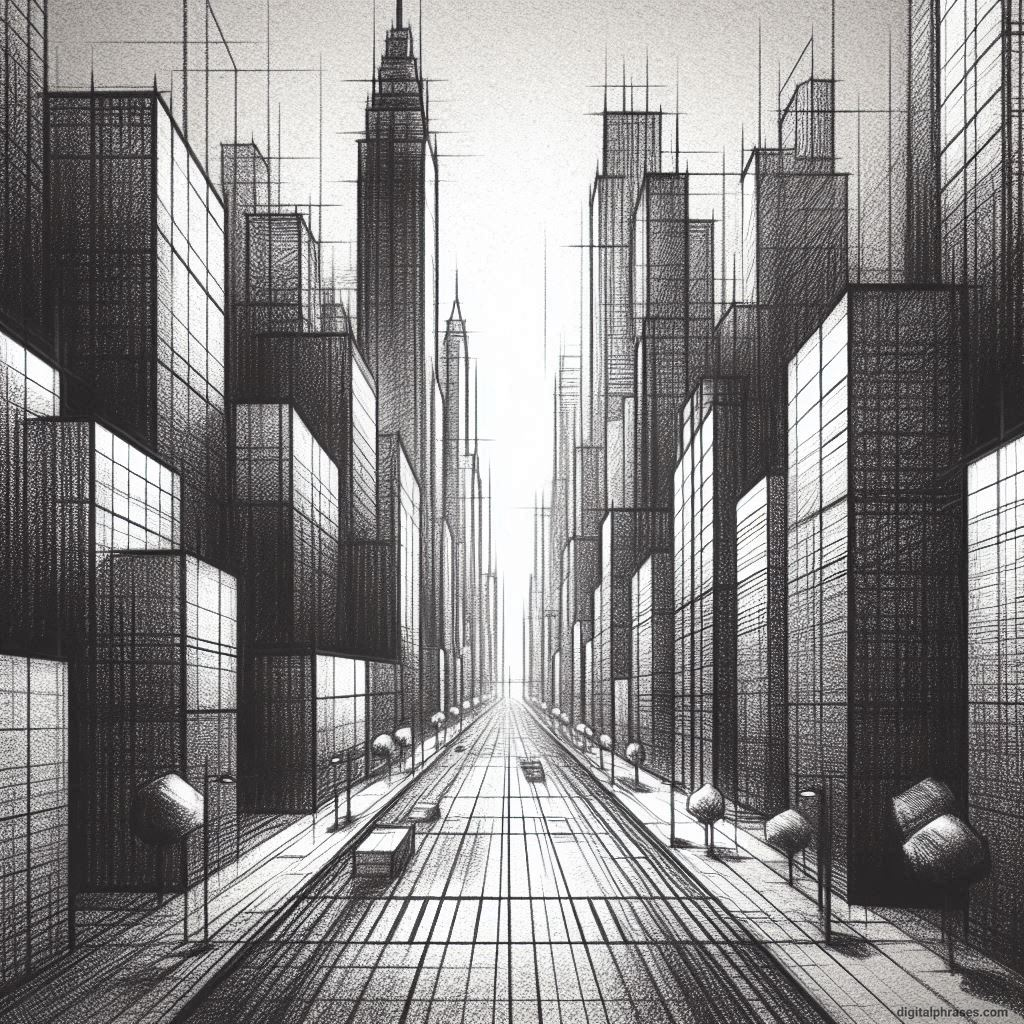
3
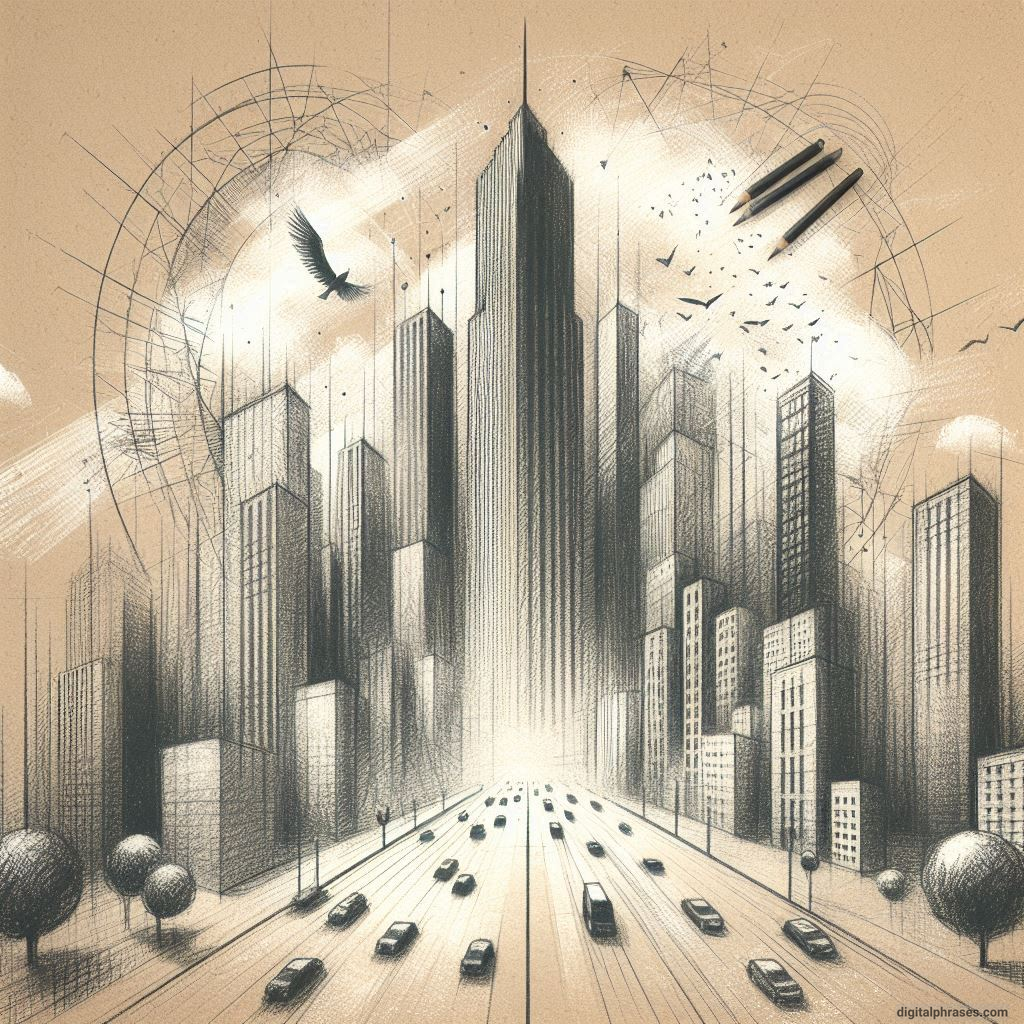
4
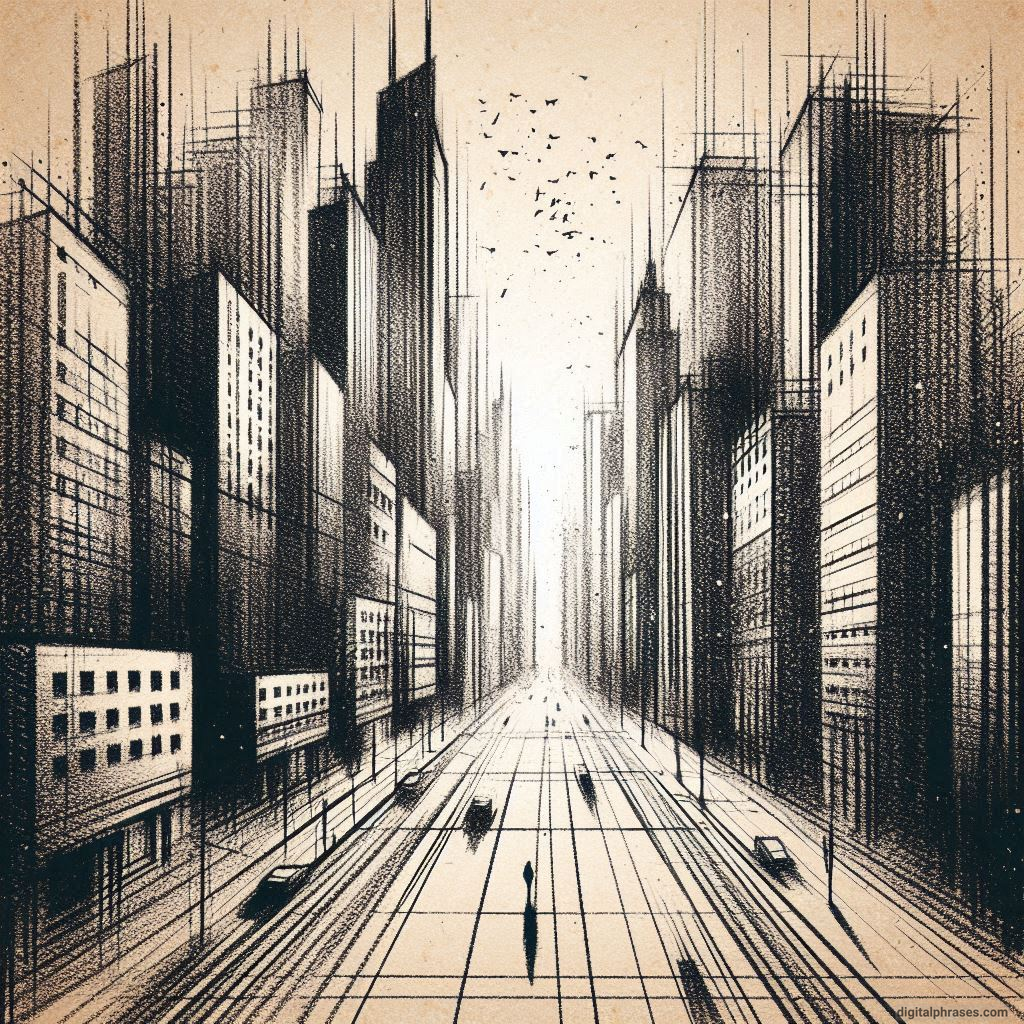
5

6
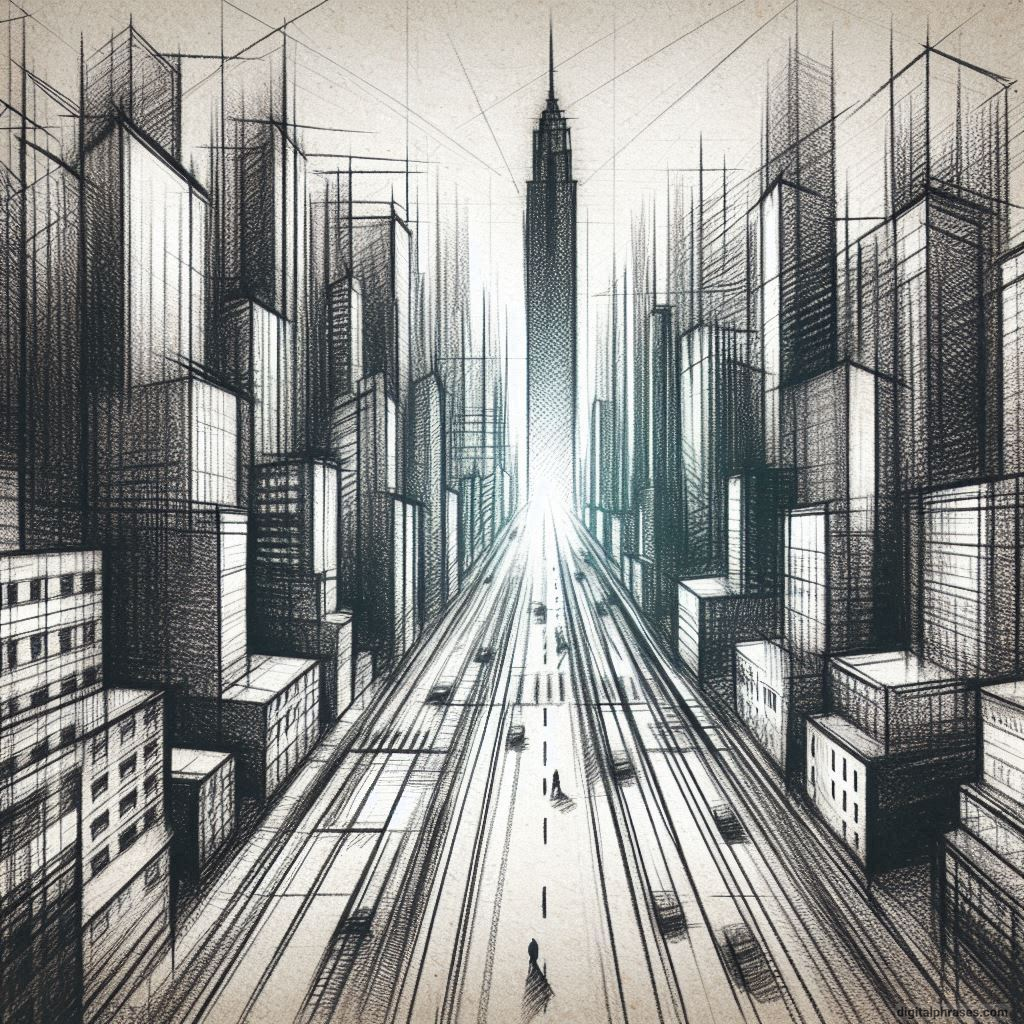
7
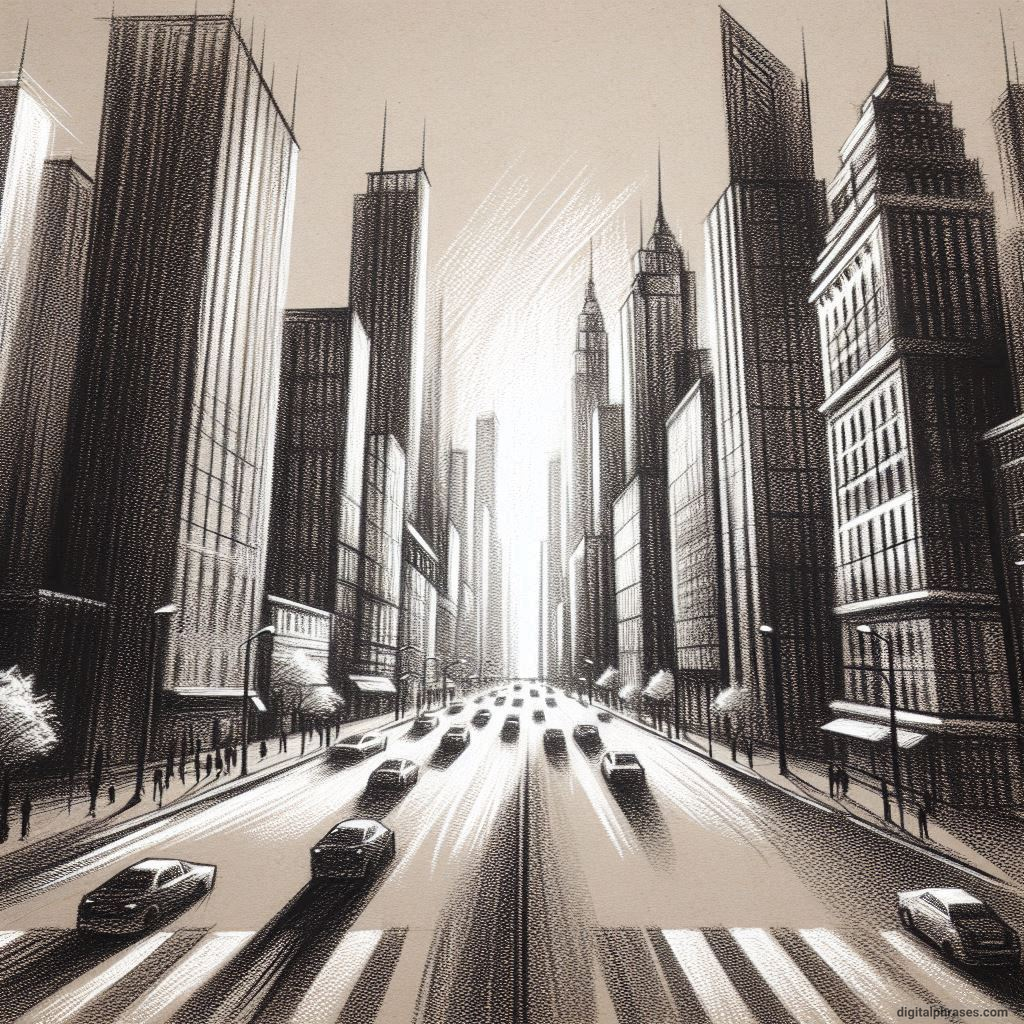
8

9
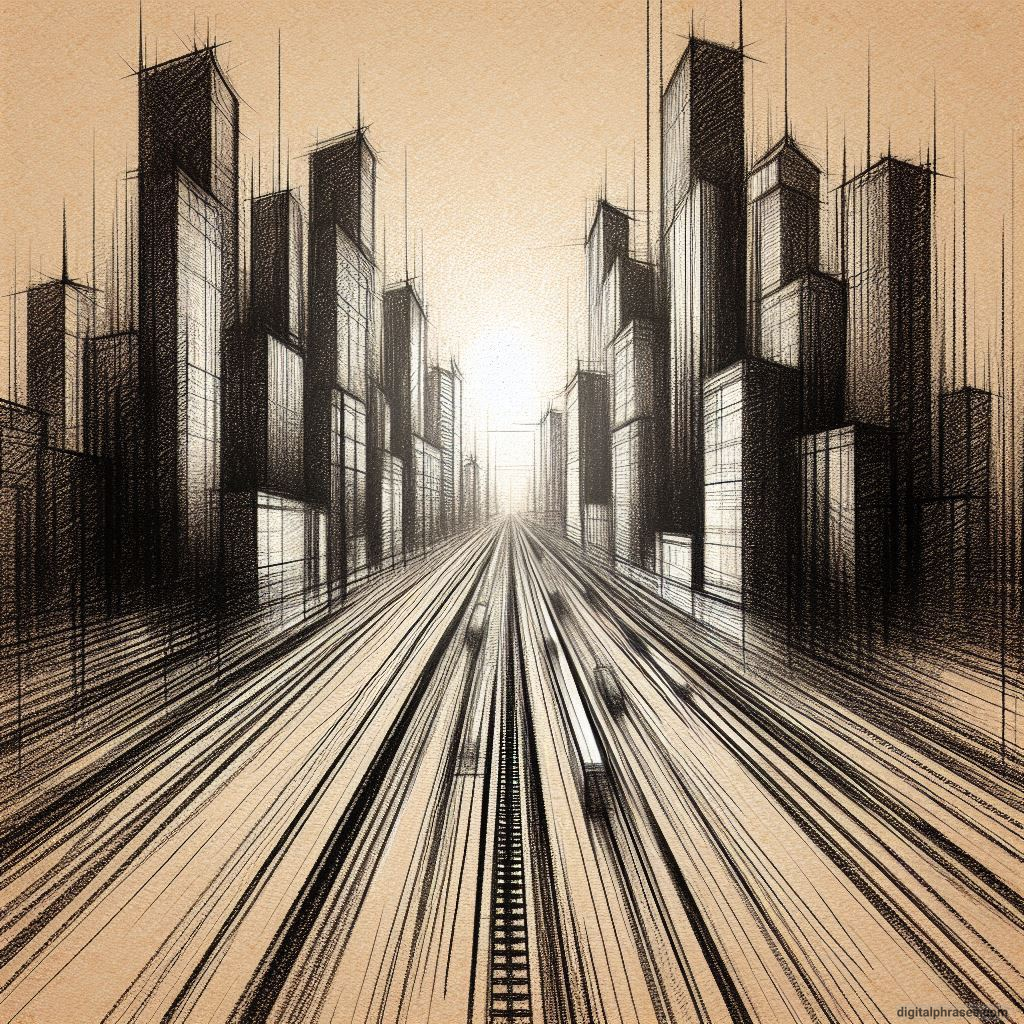
10
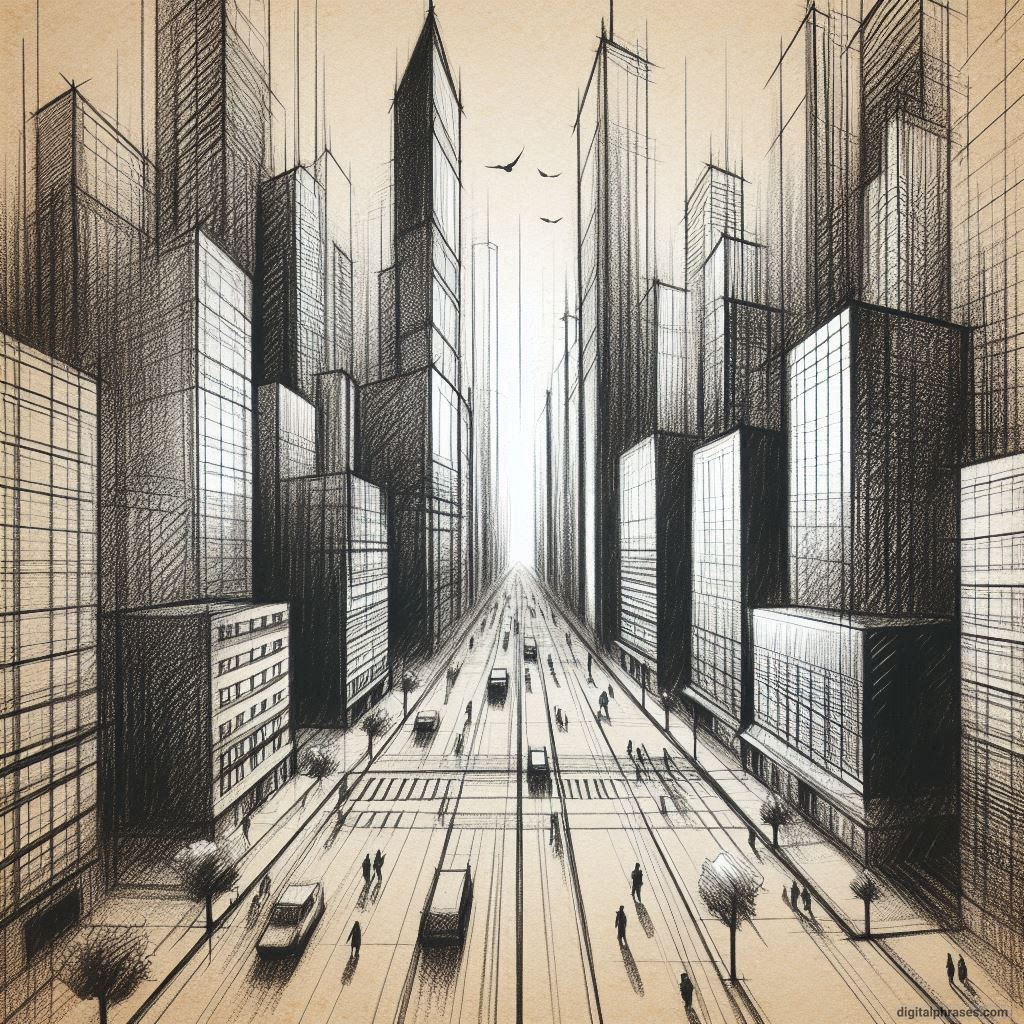
11
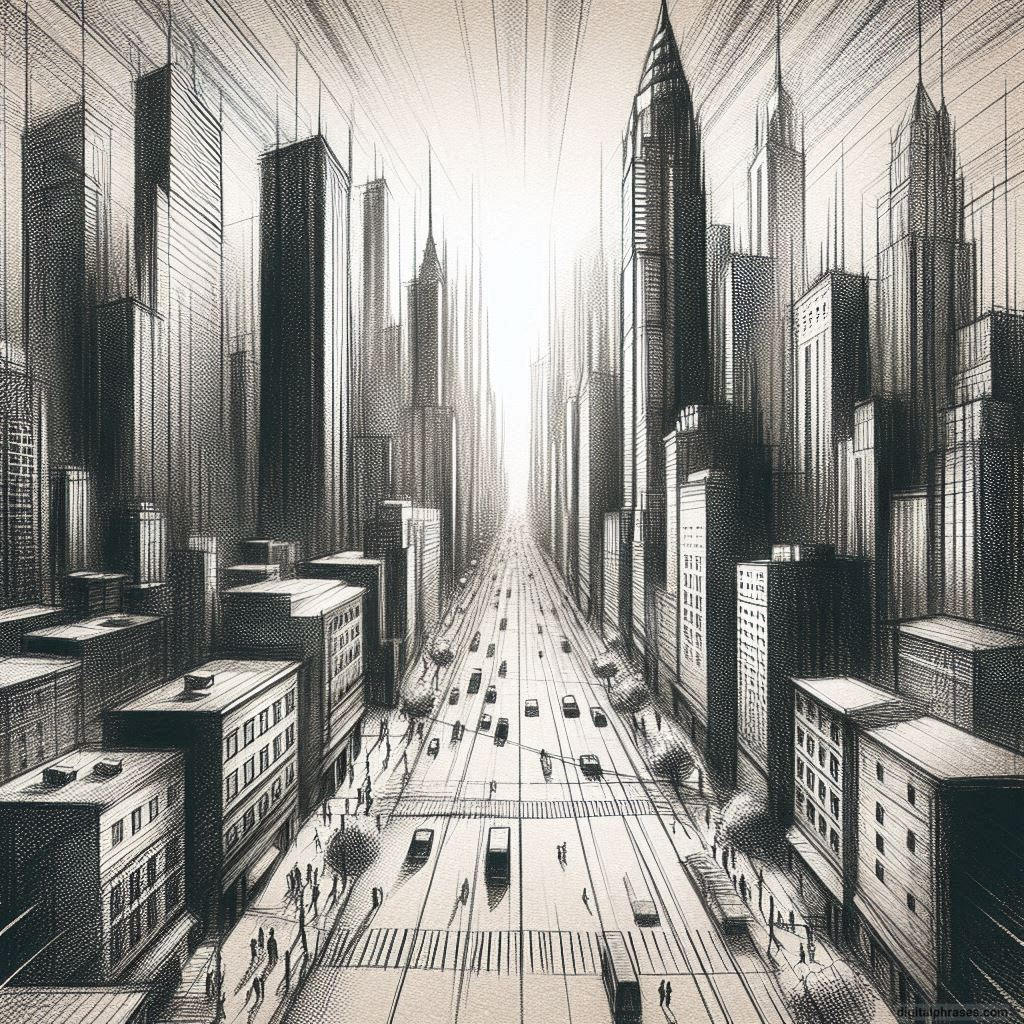
12
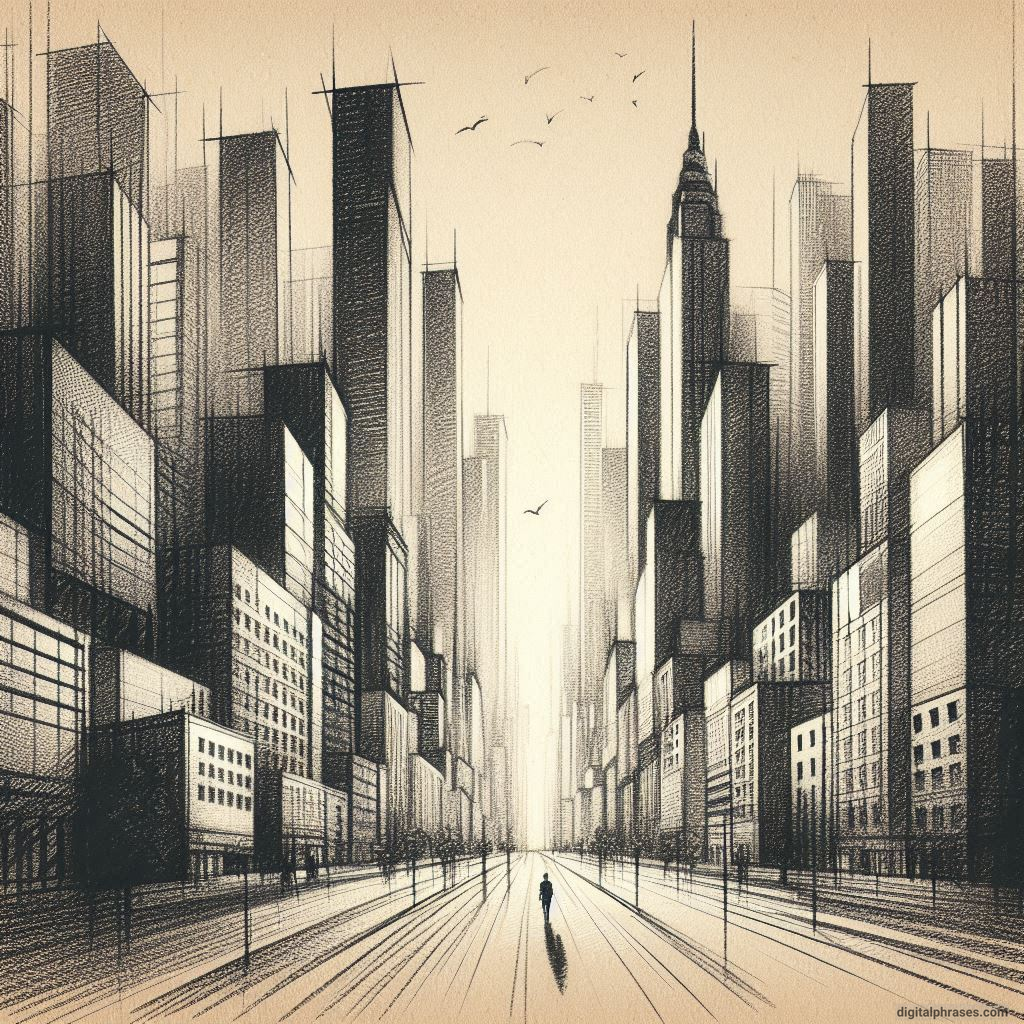
13
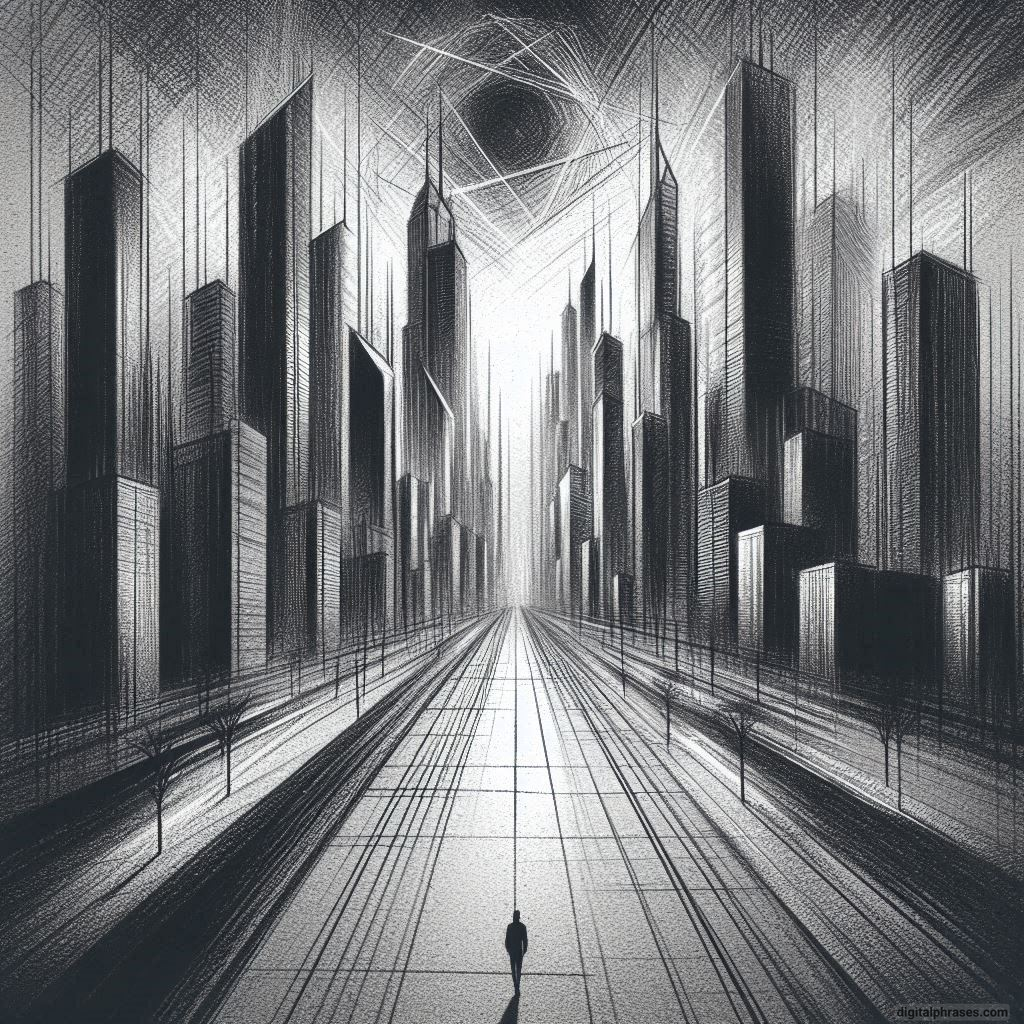
14
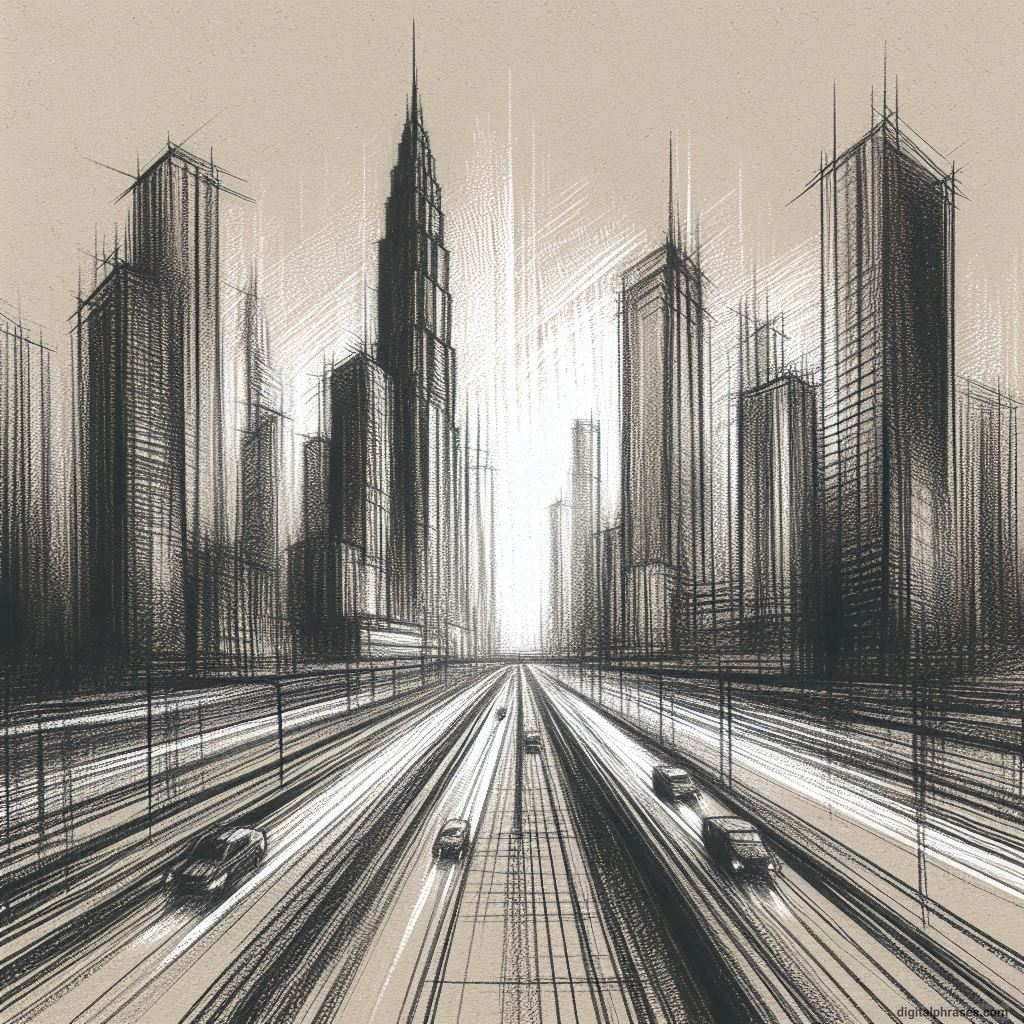
15
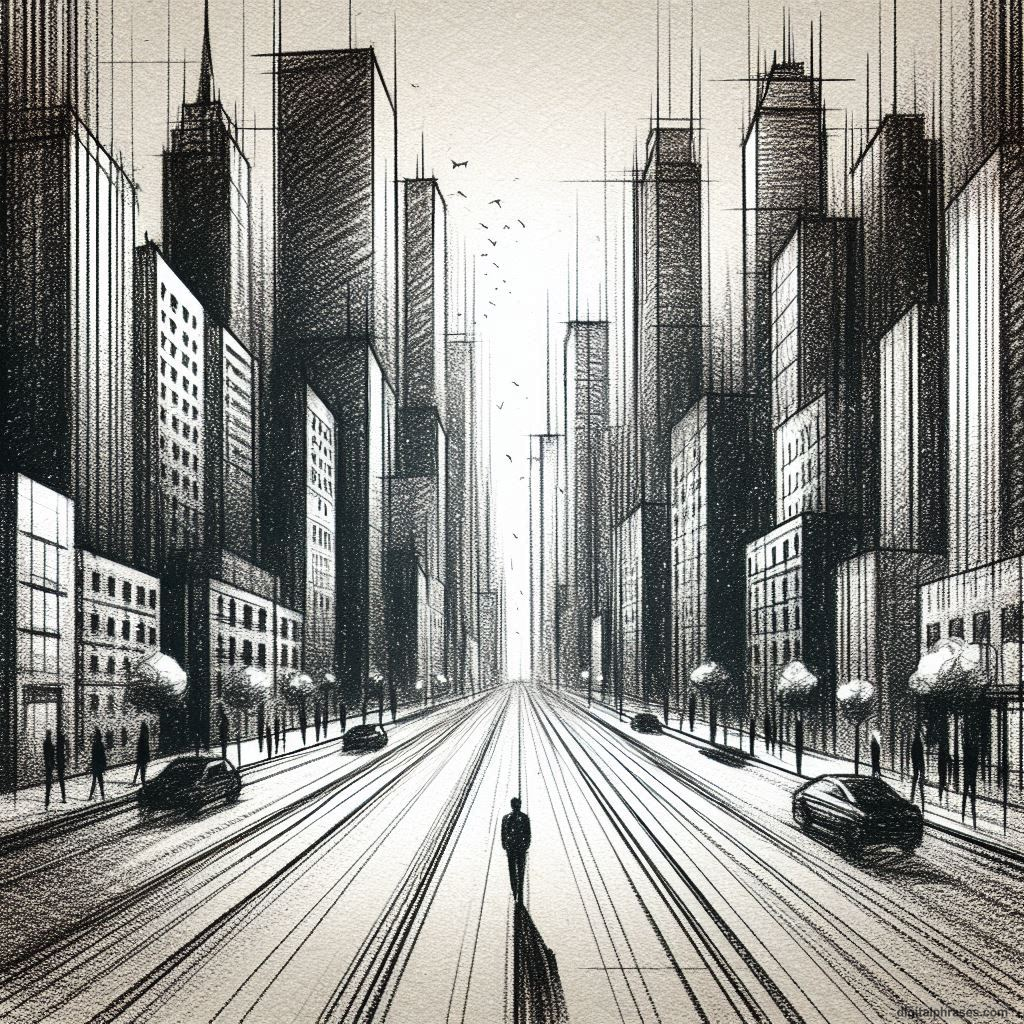
16
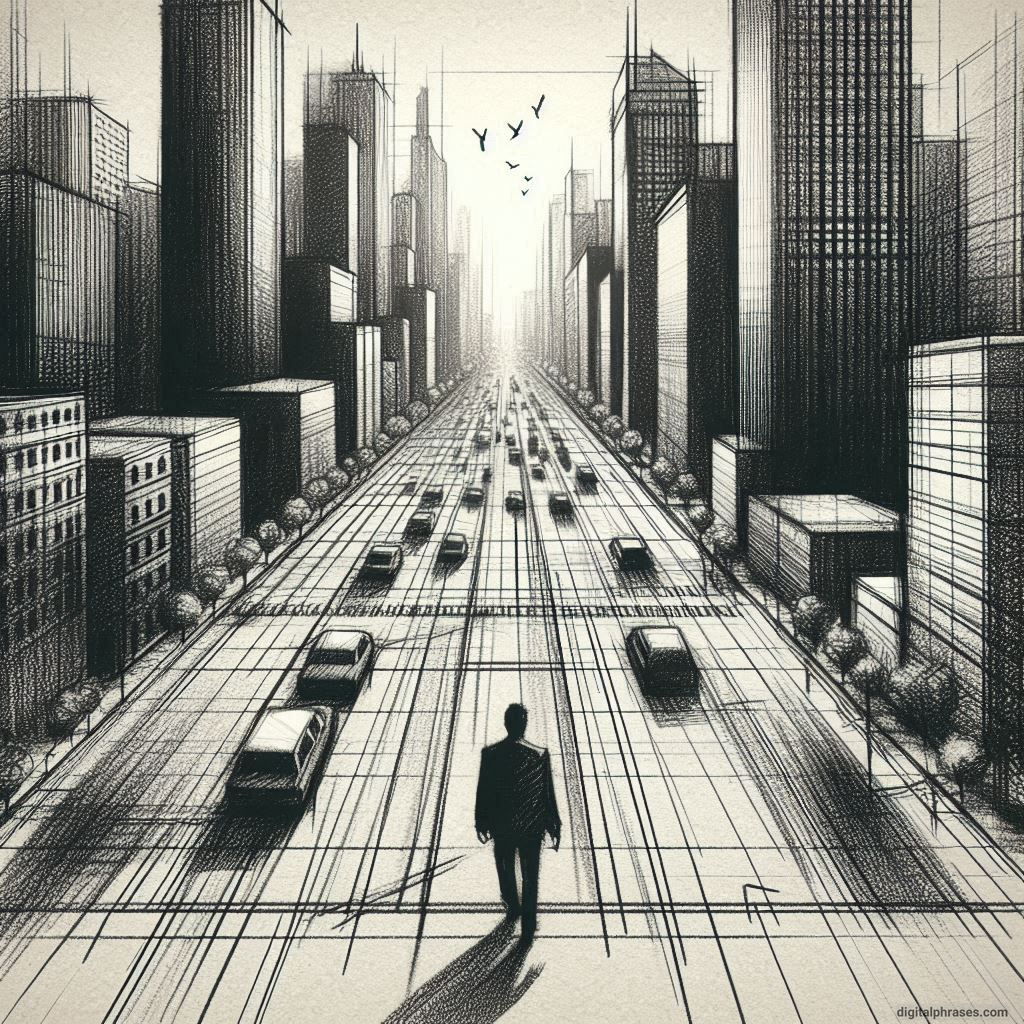
17
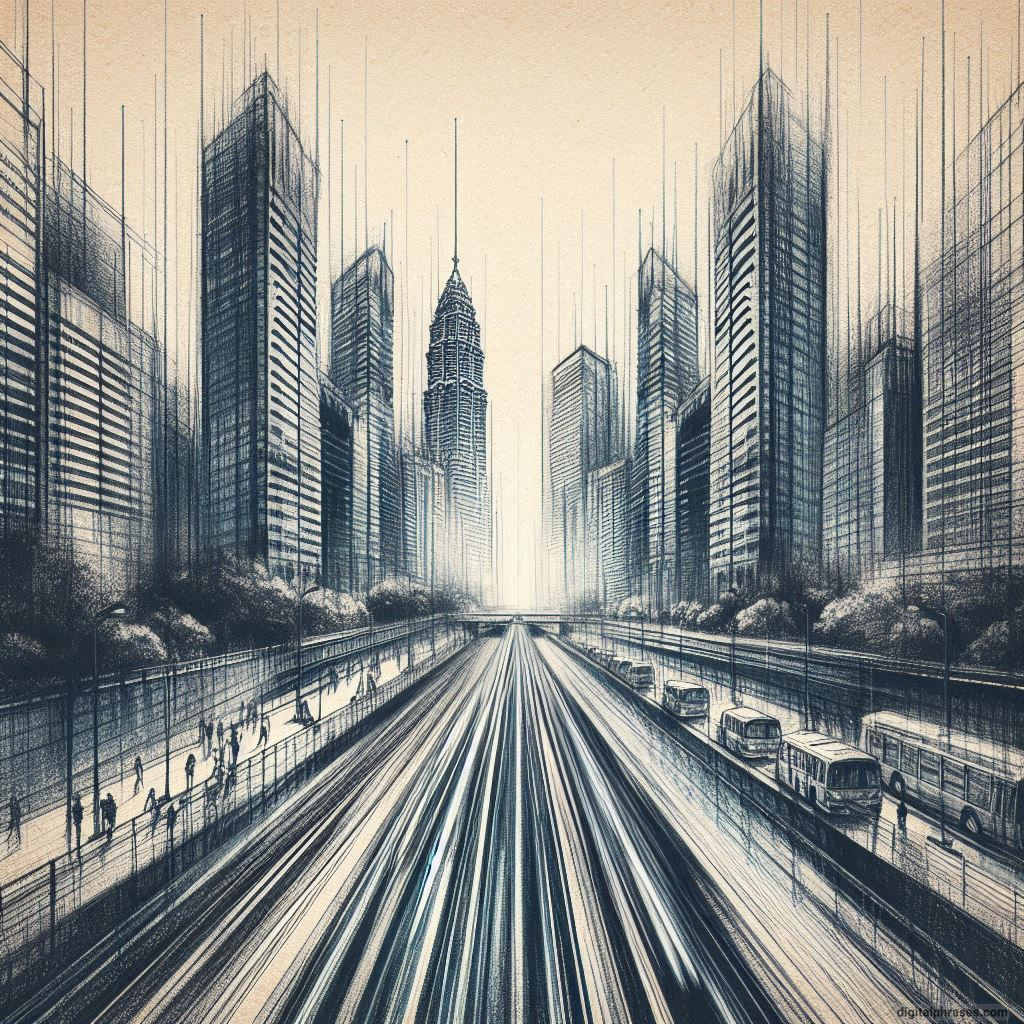
18

19

20
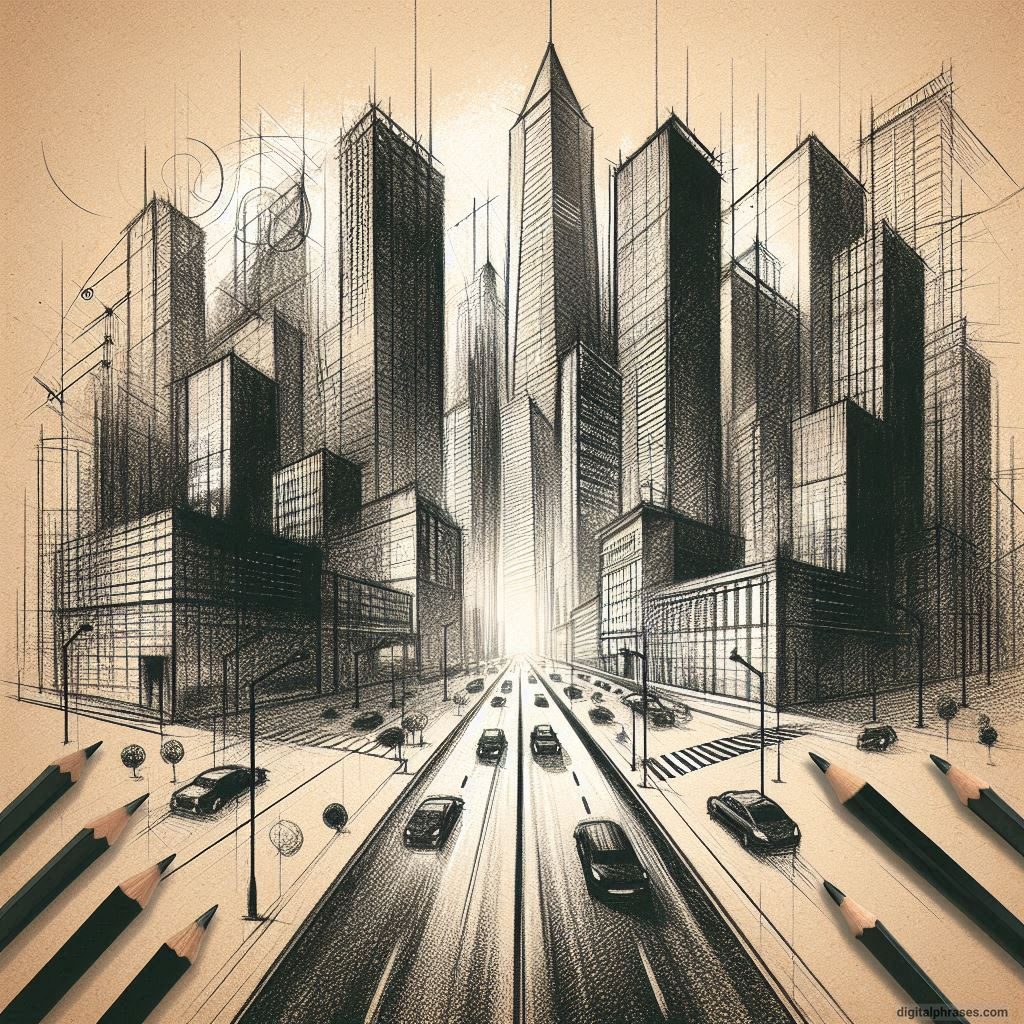
21
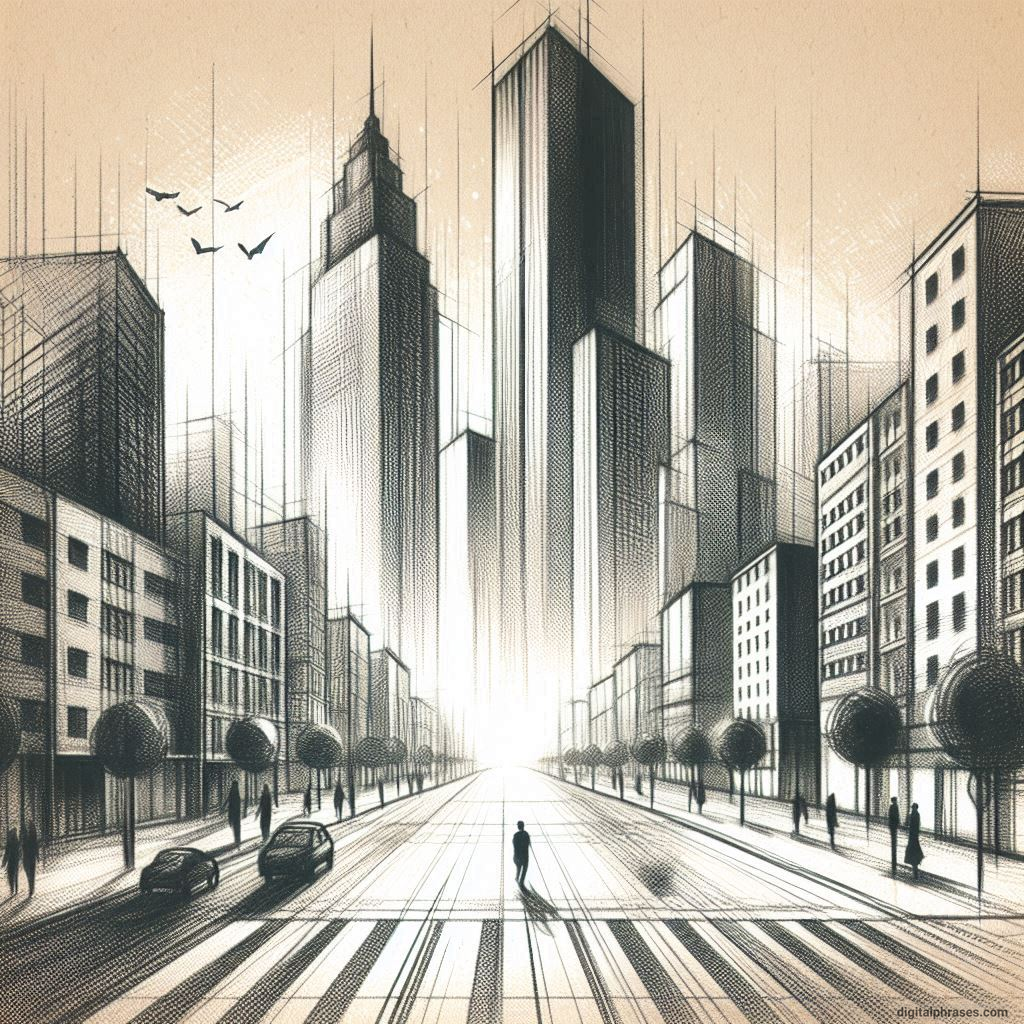
22
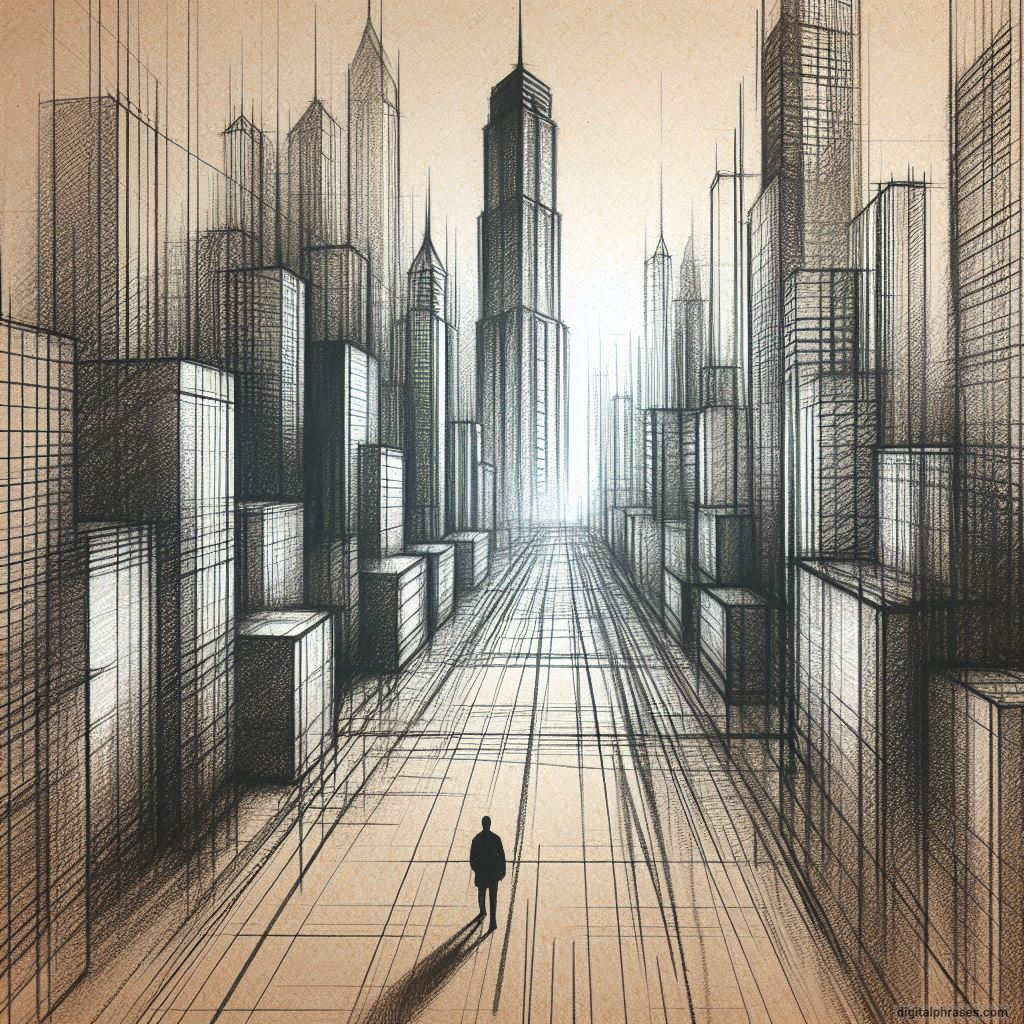
23
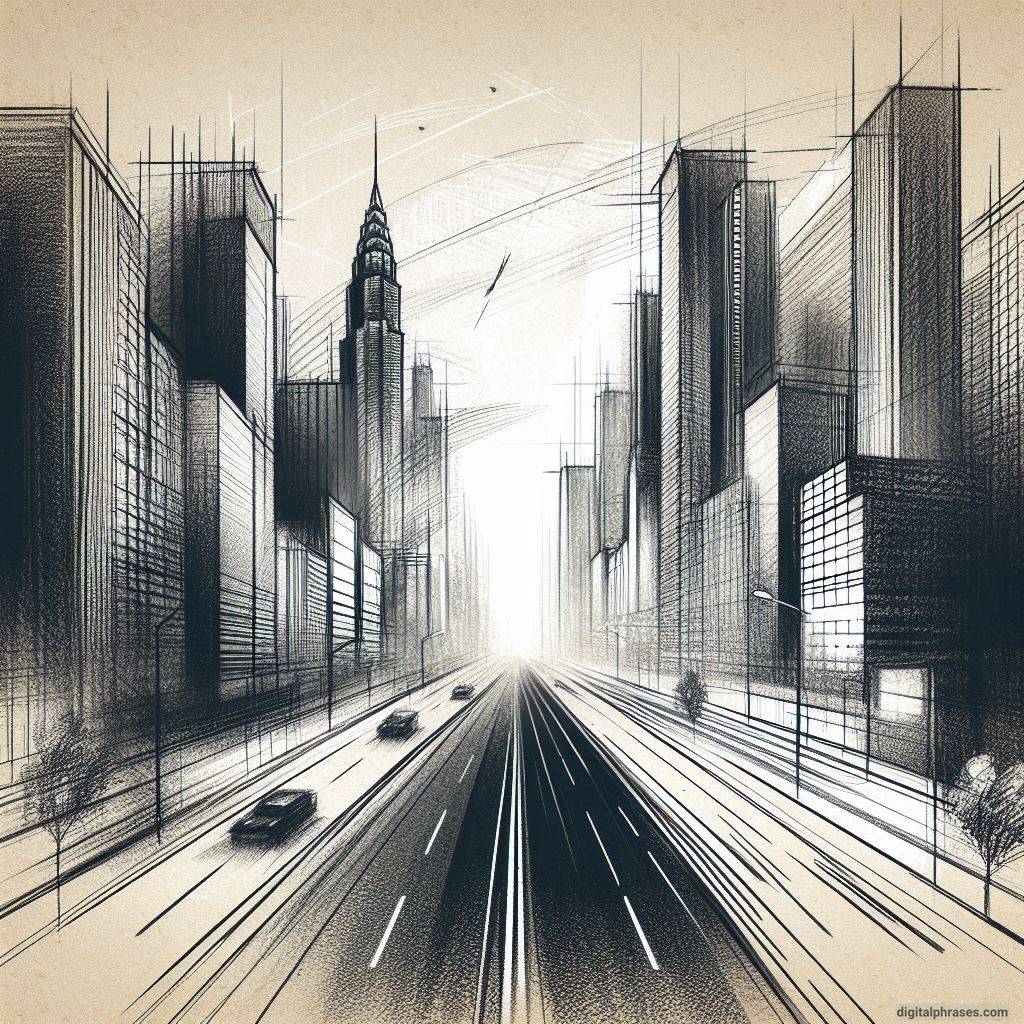
24

25
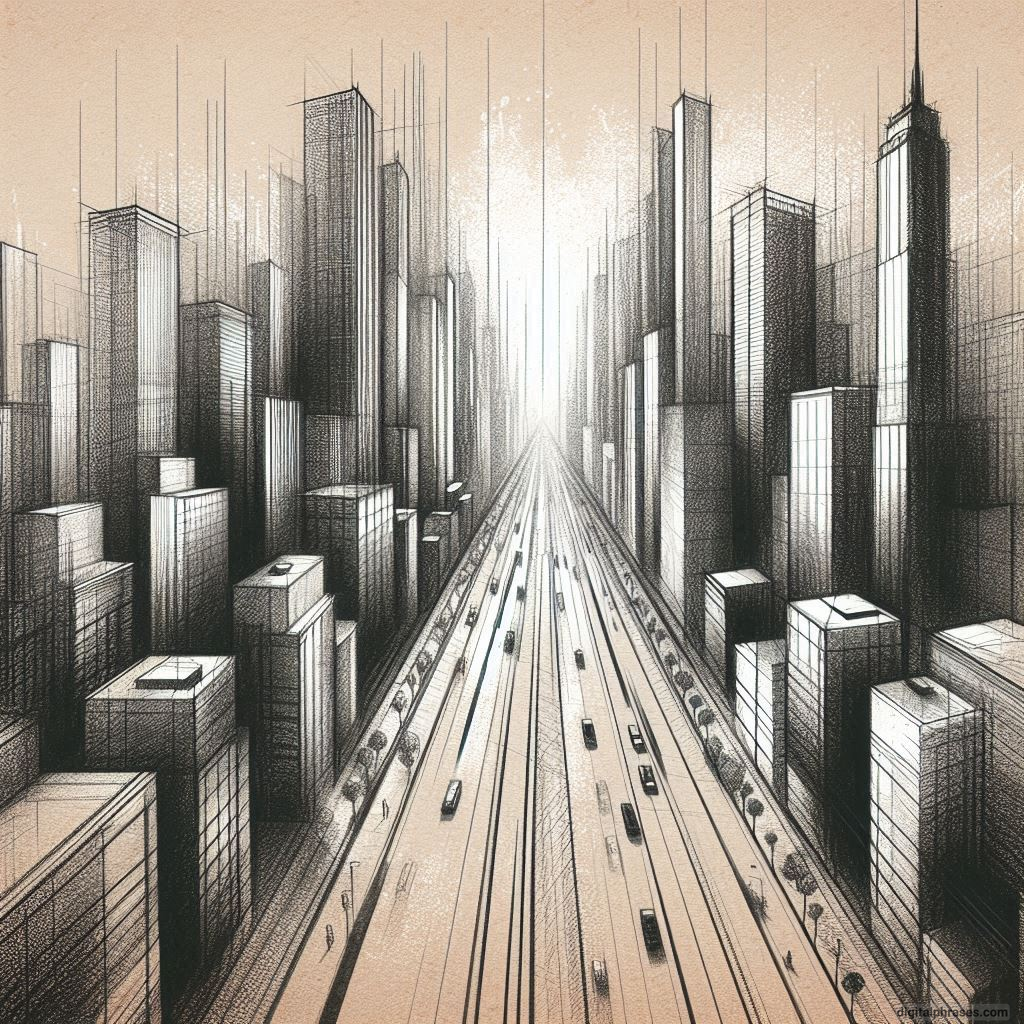
26
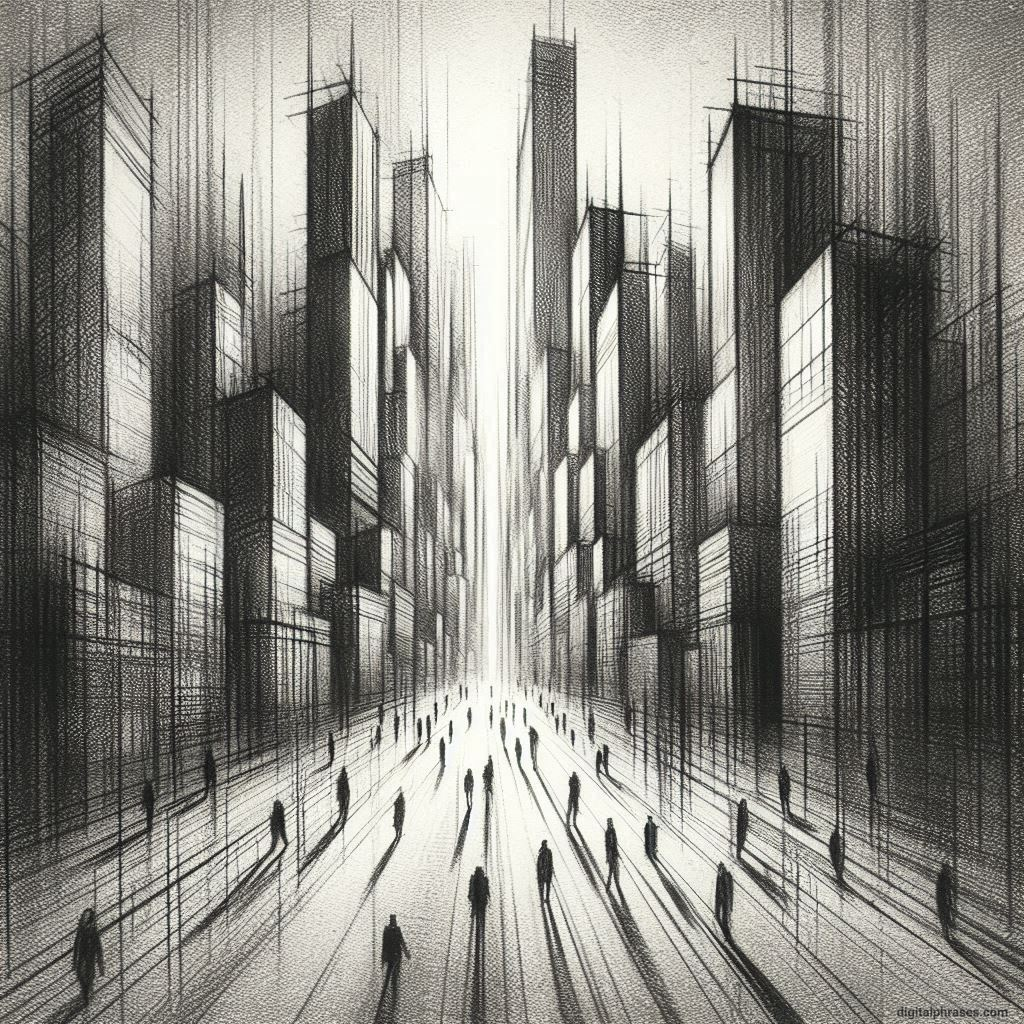
28
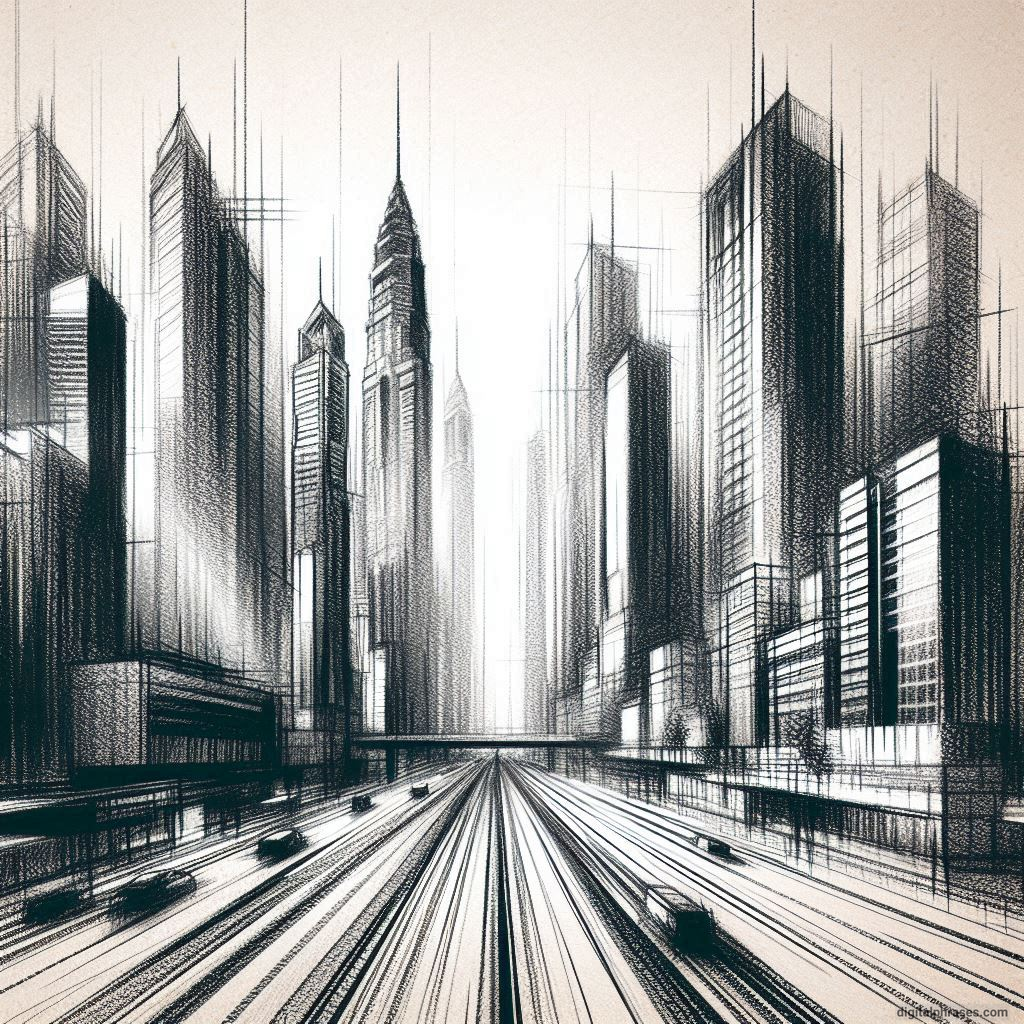
29
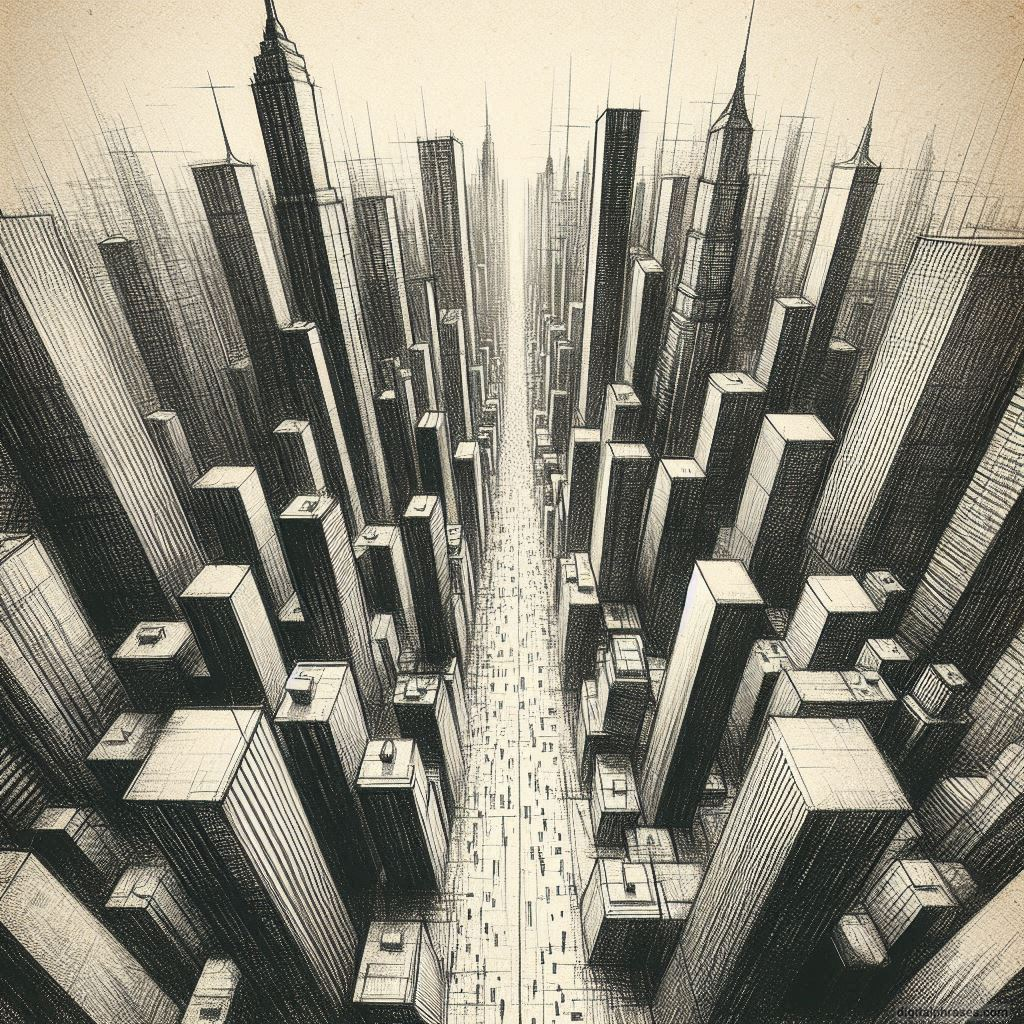
30
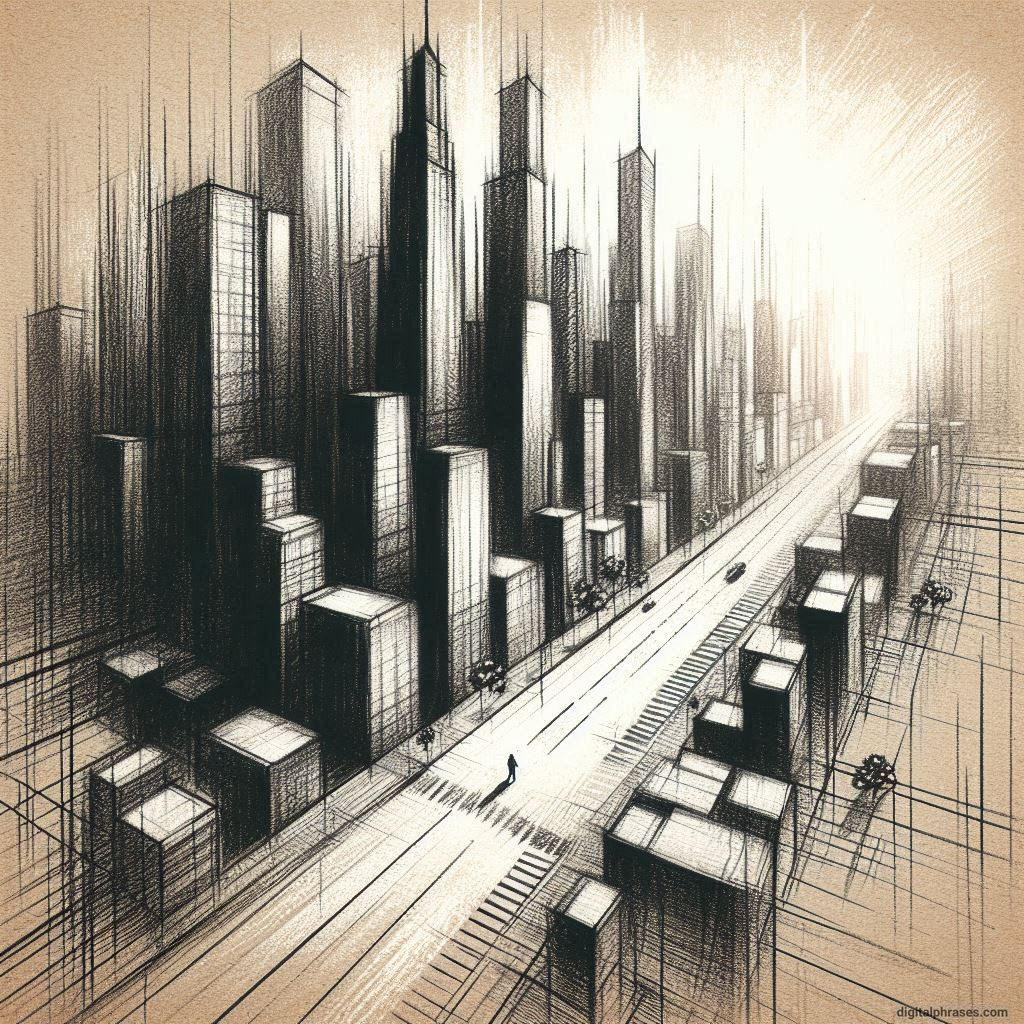
31
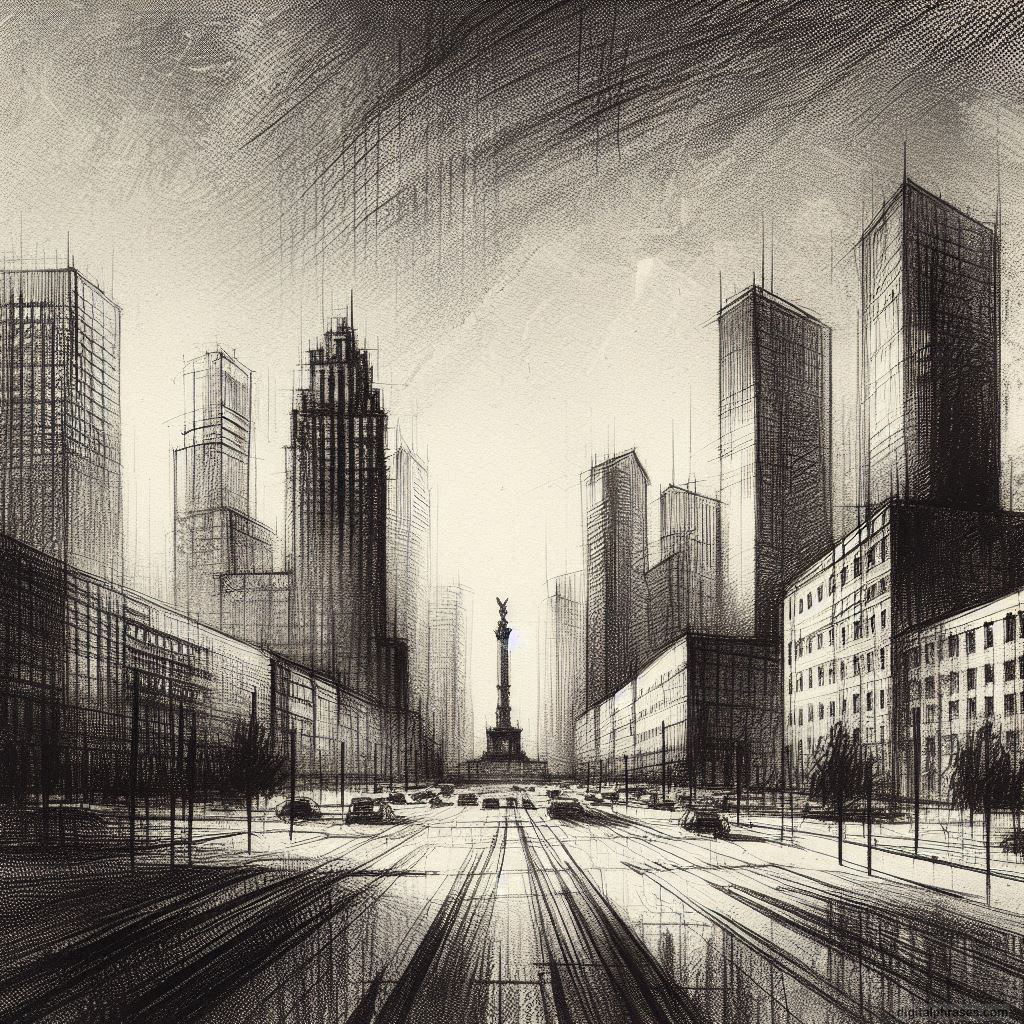
32

33
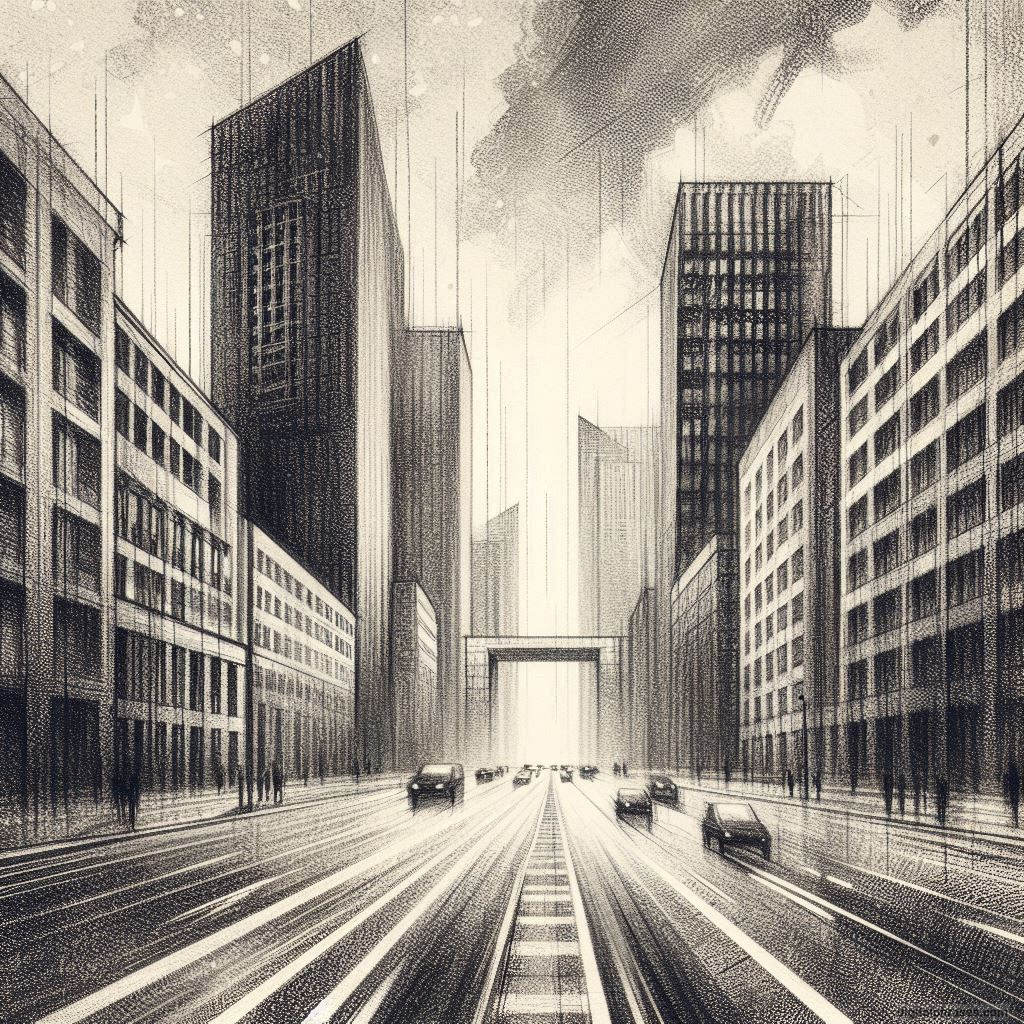
34
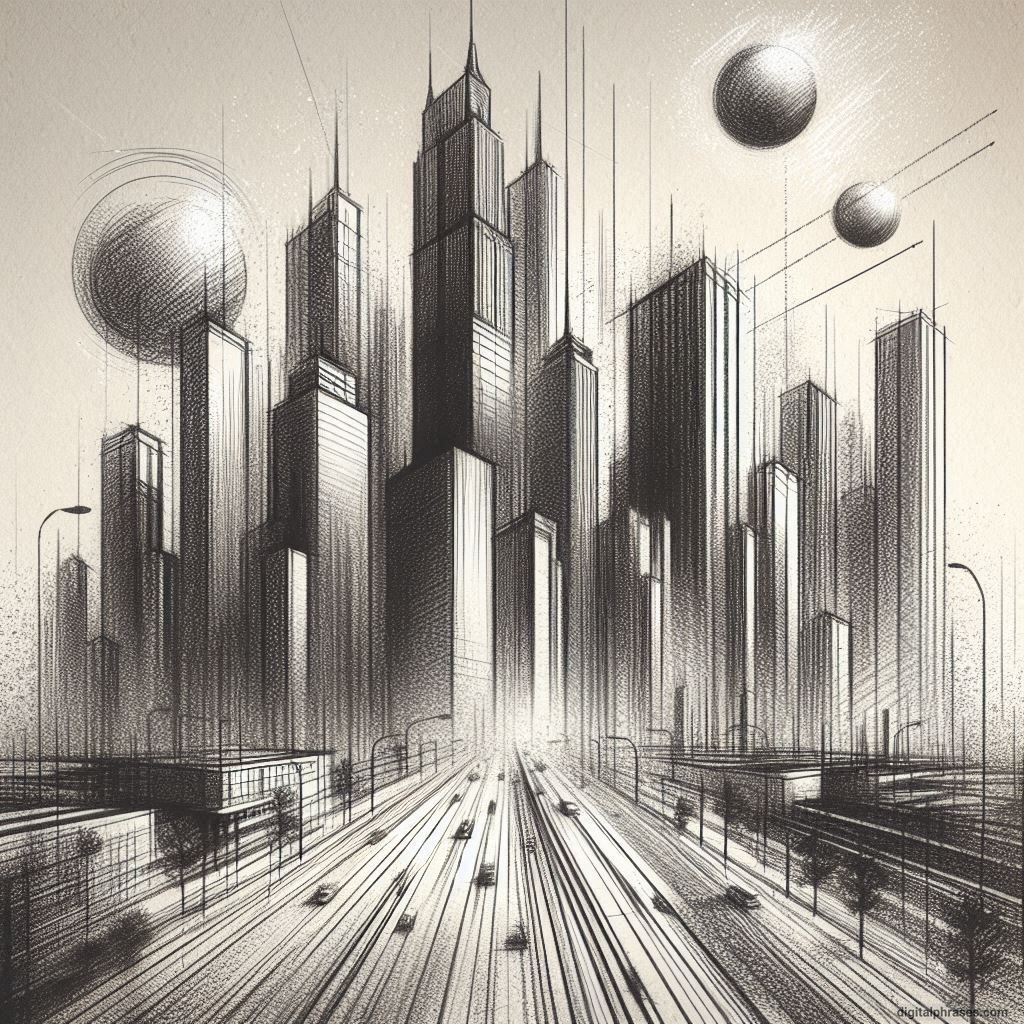
35

36
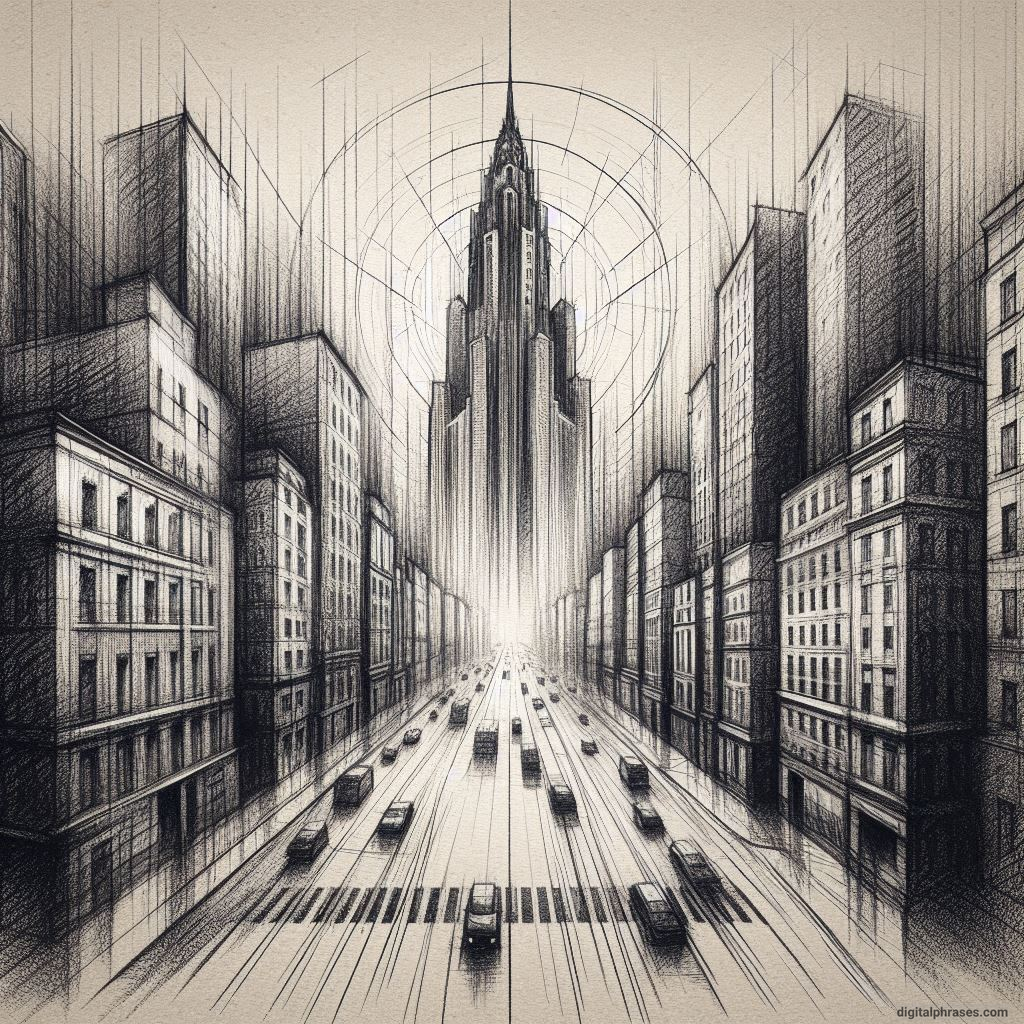
37

38
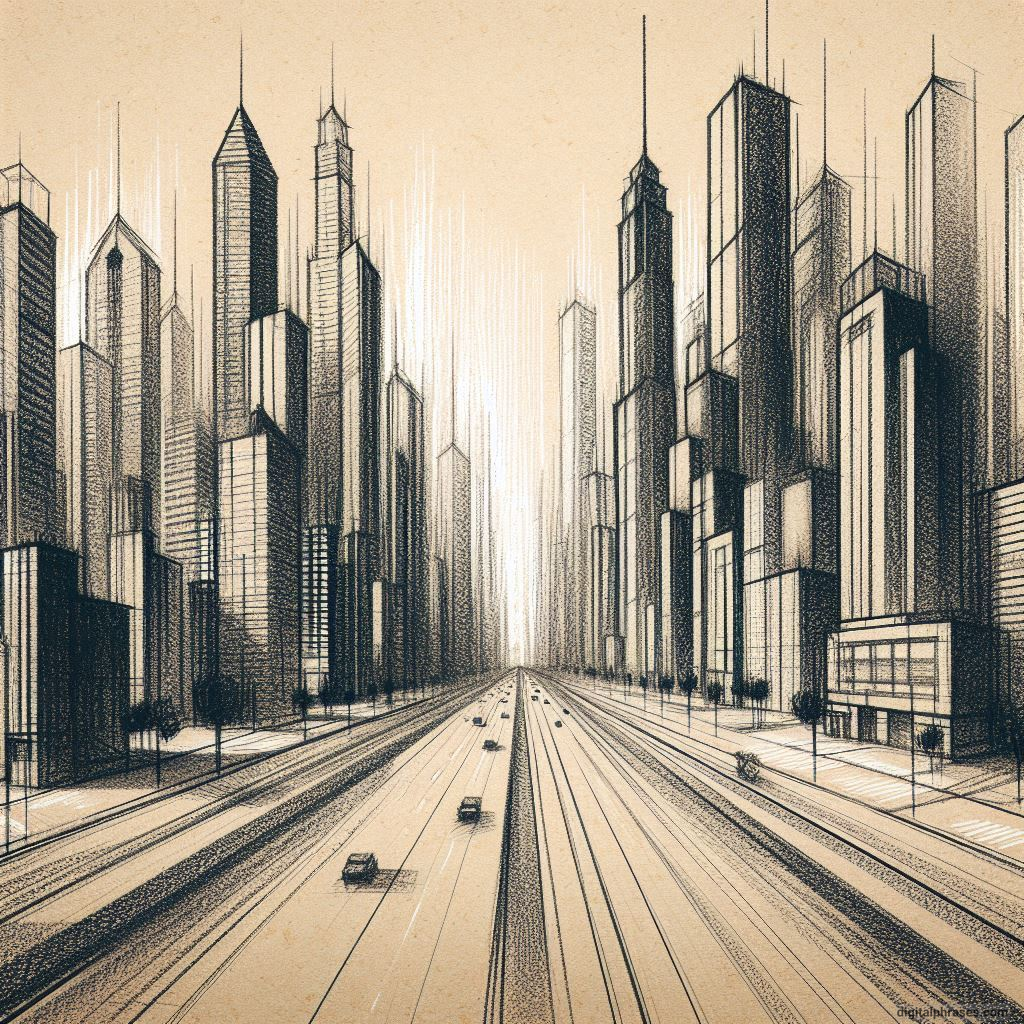
39
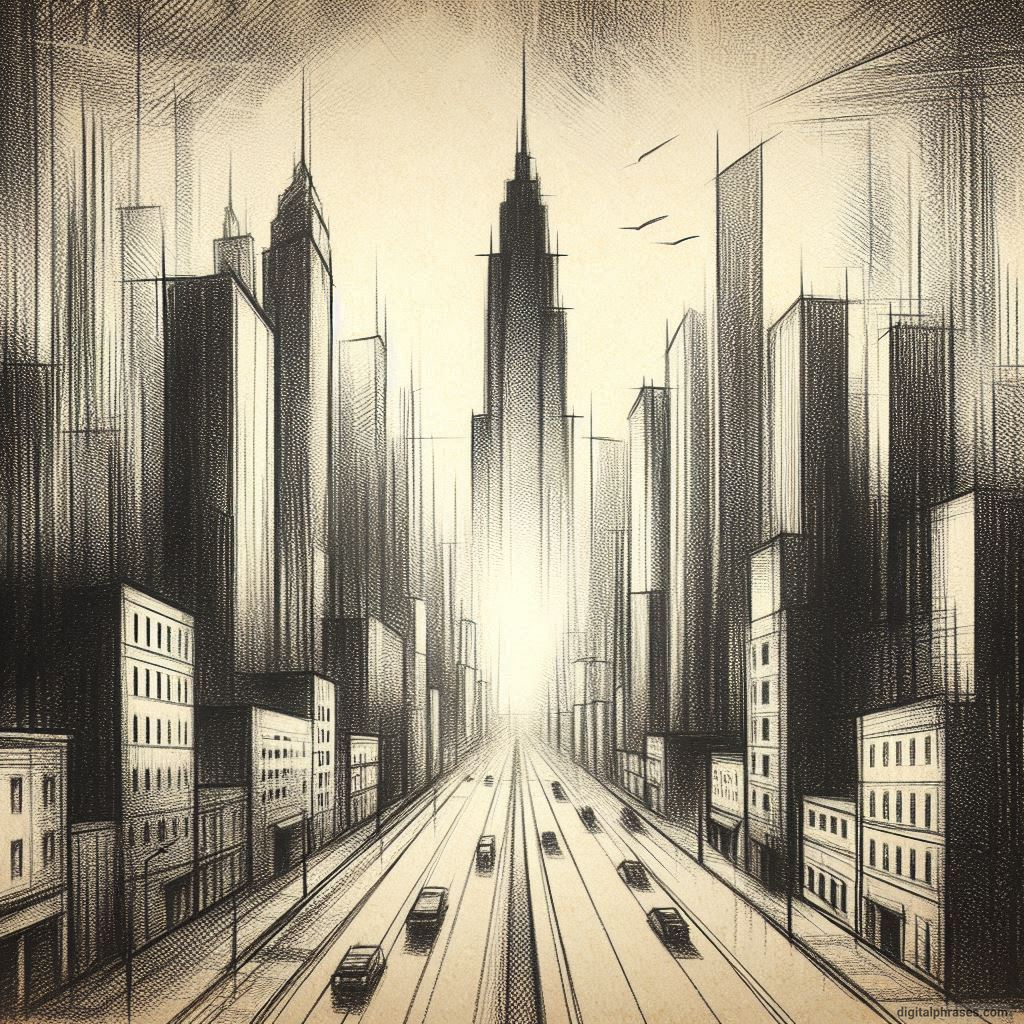
40
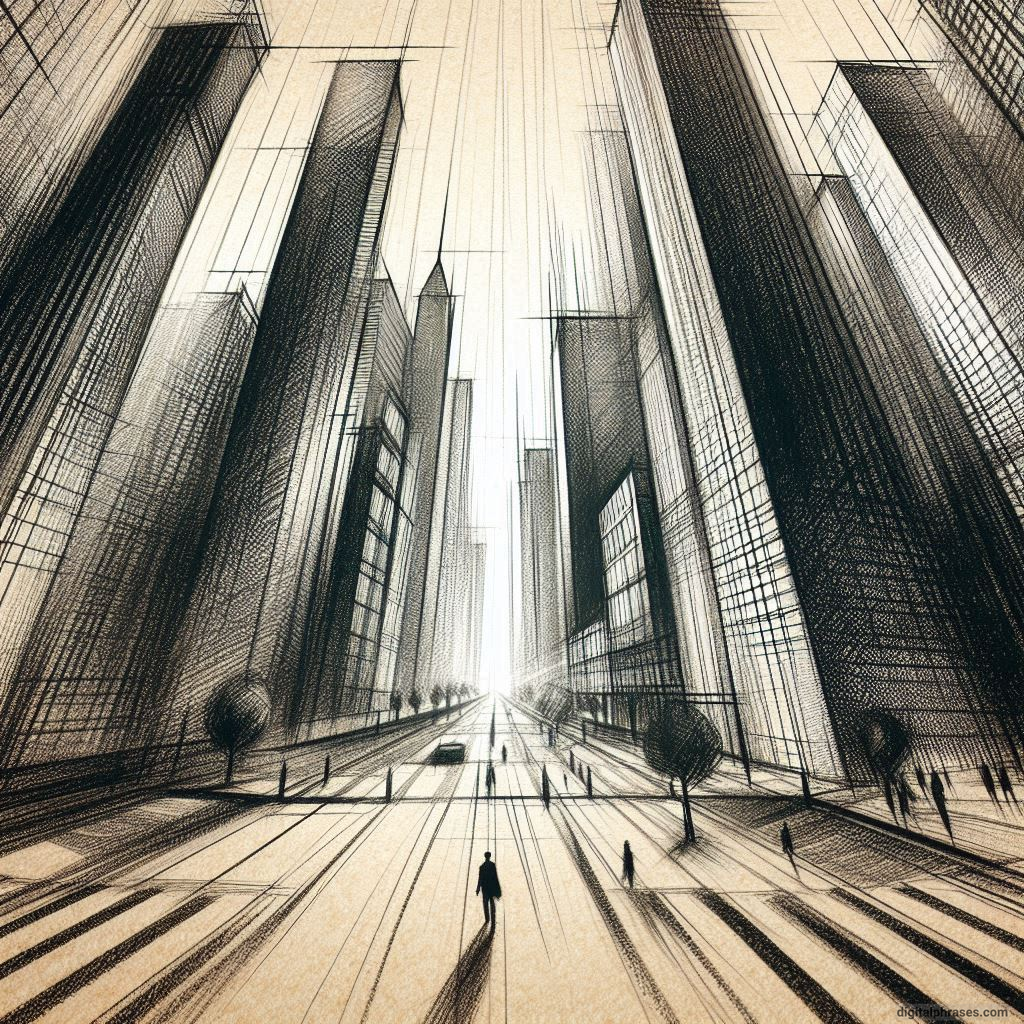
41
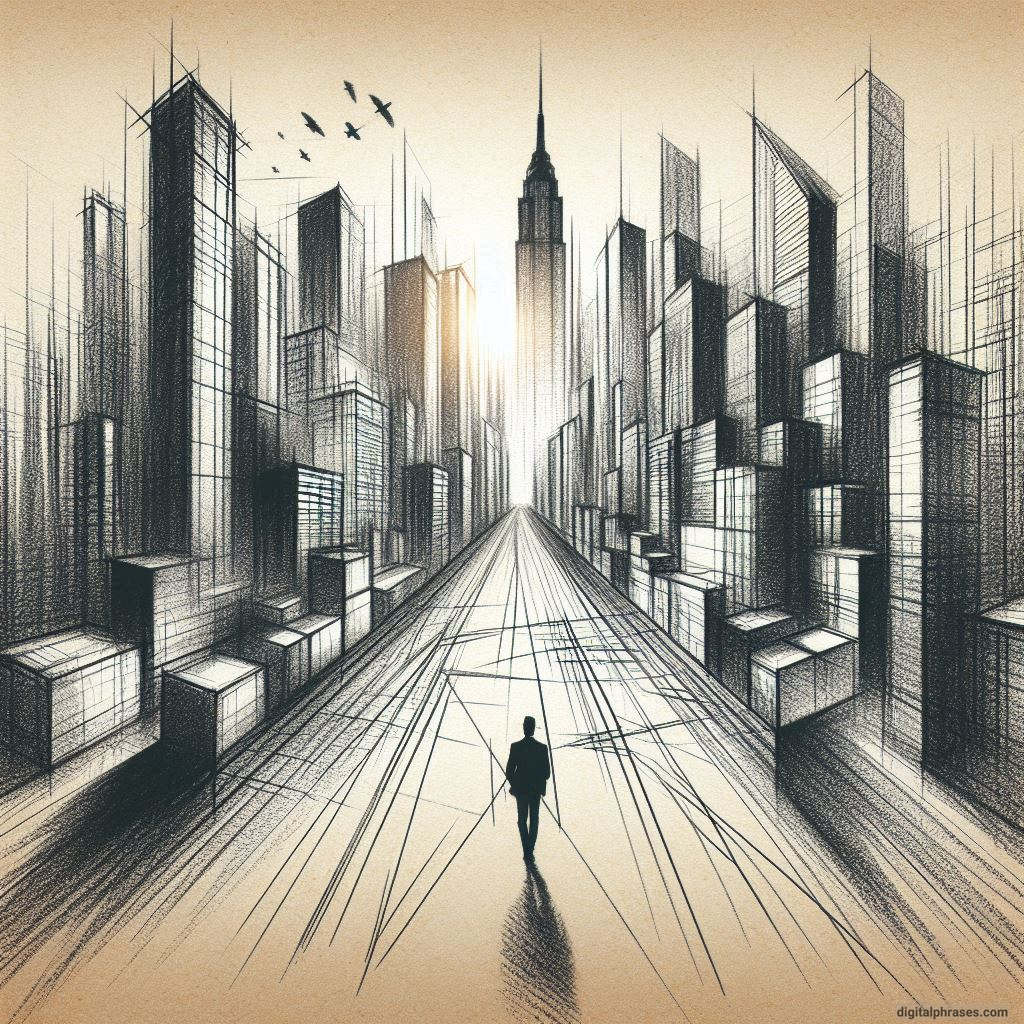
42
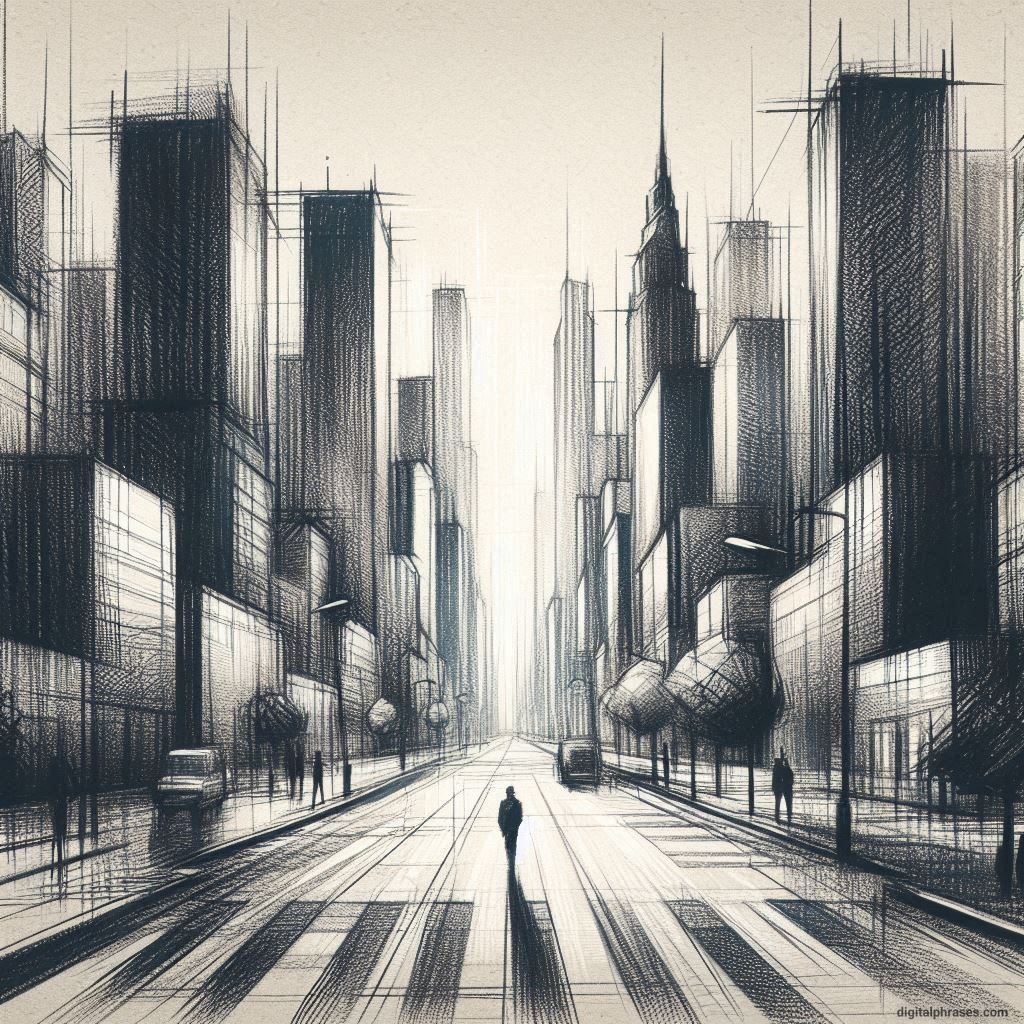
43
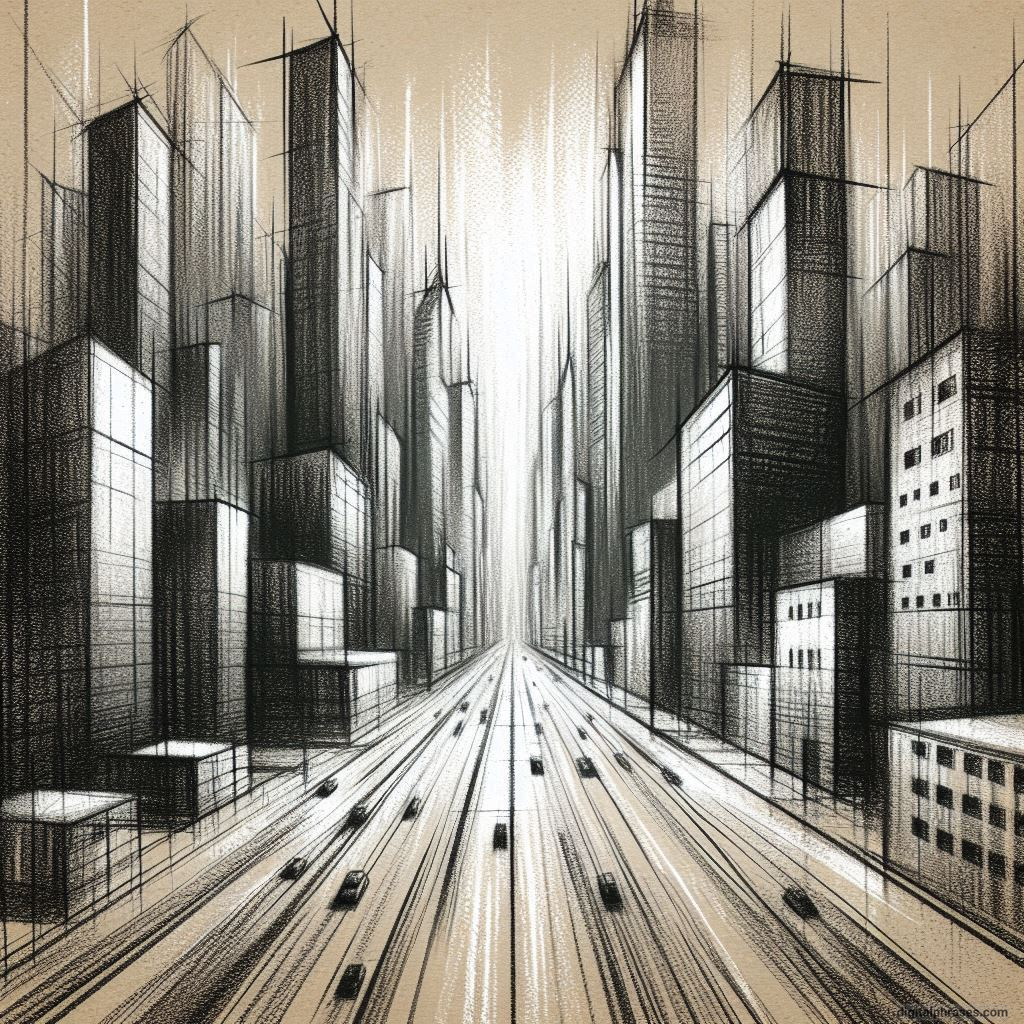
44
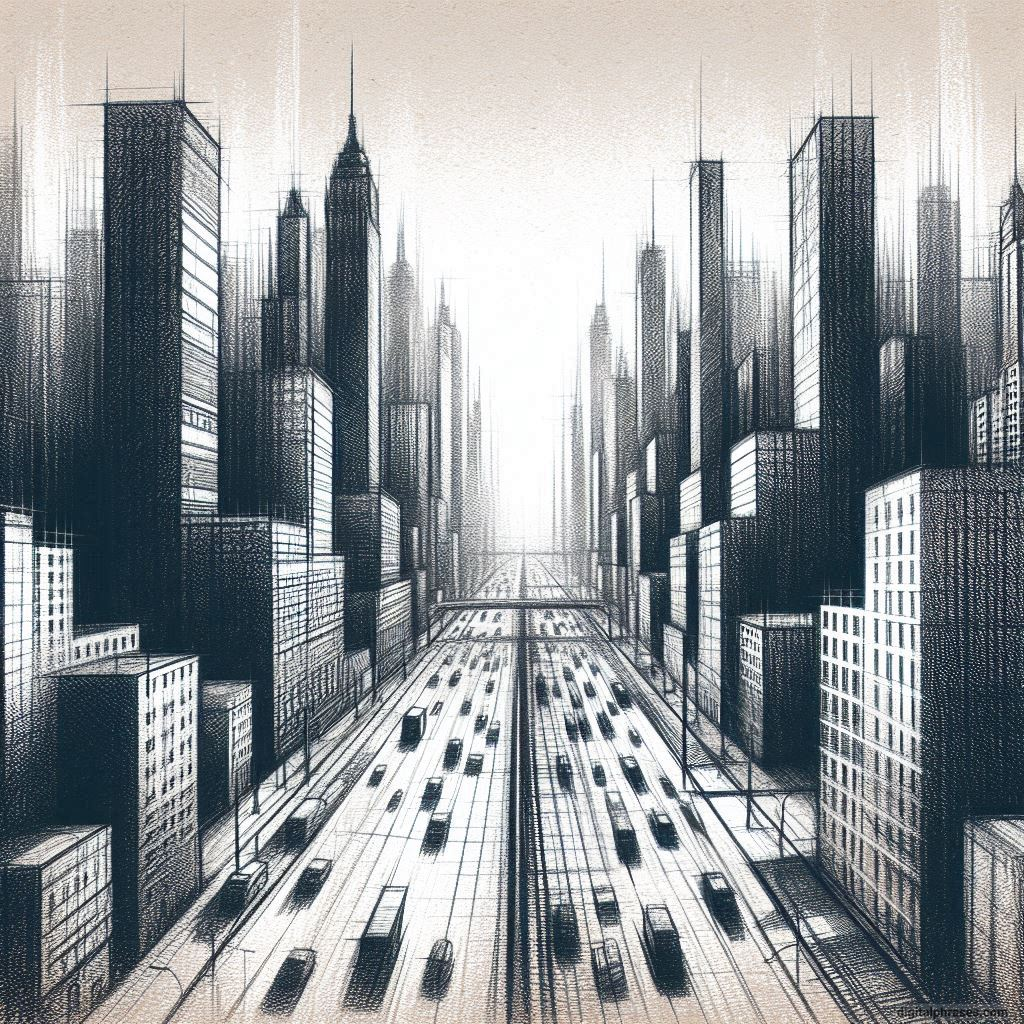
45

46
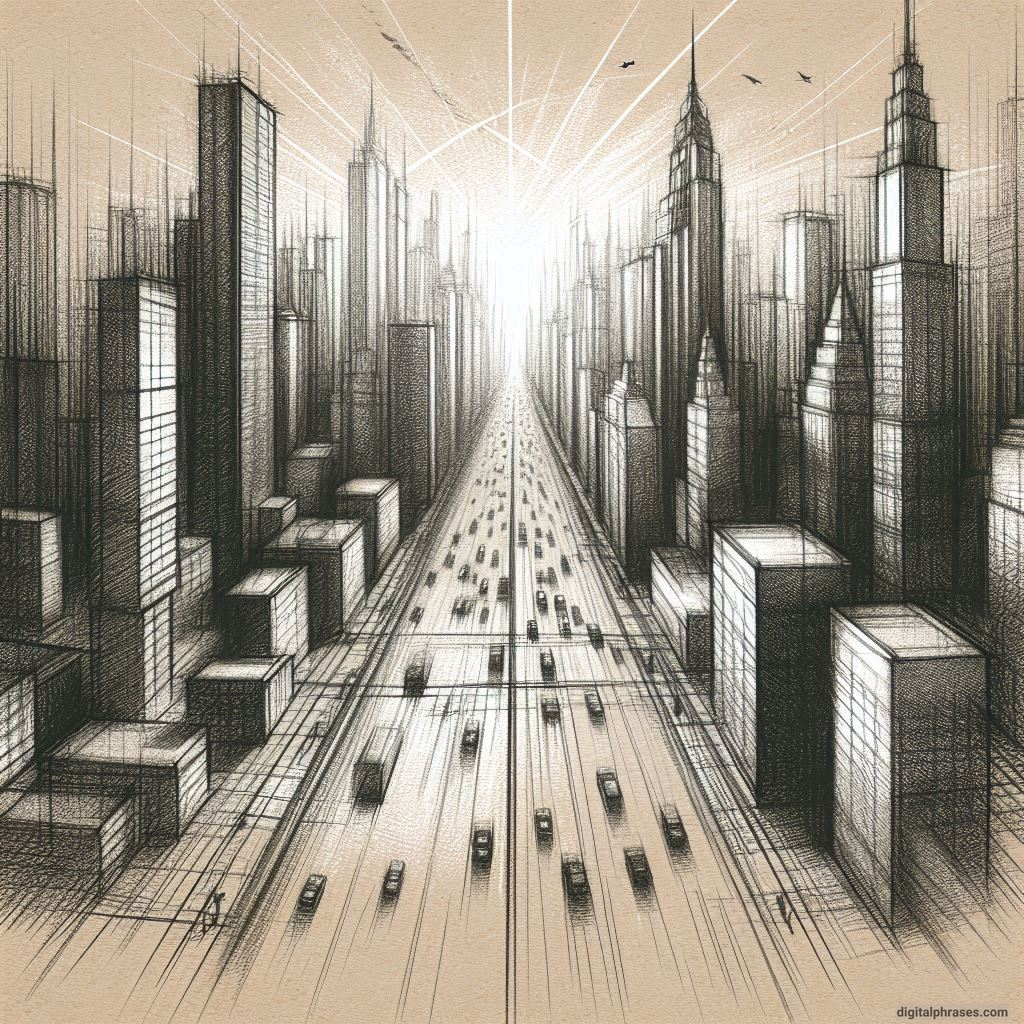
47

48
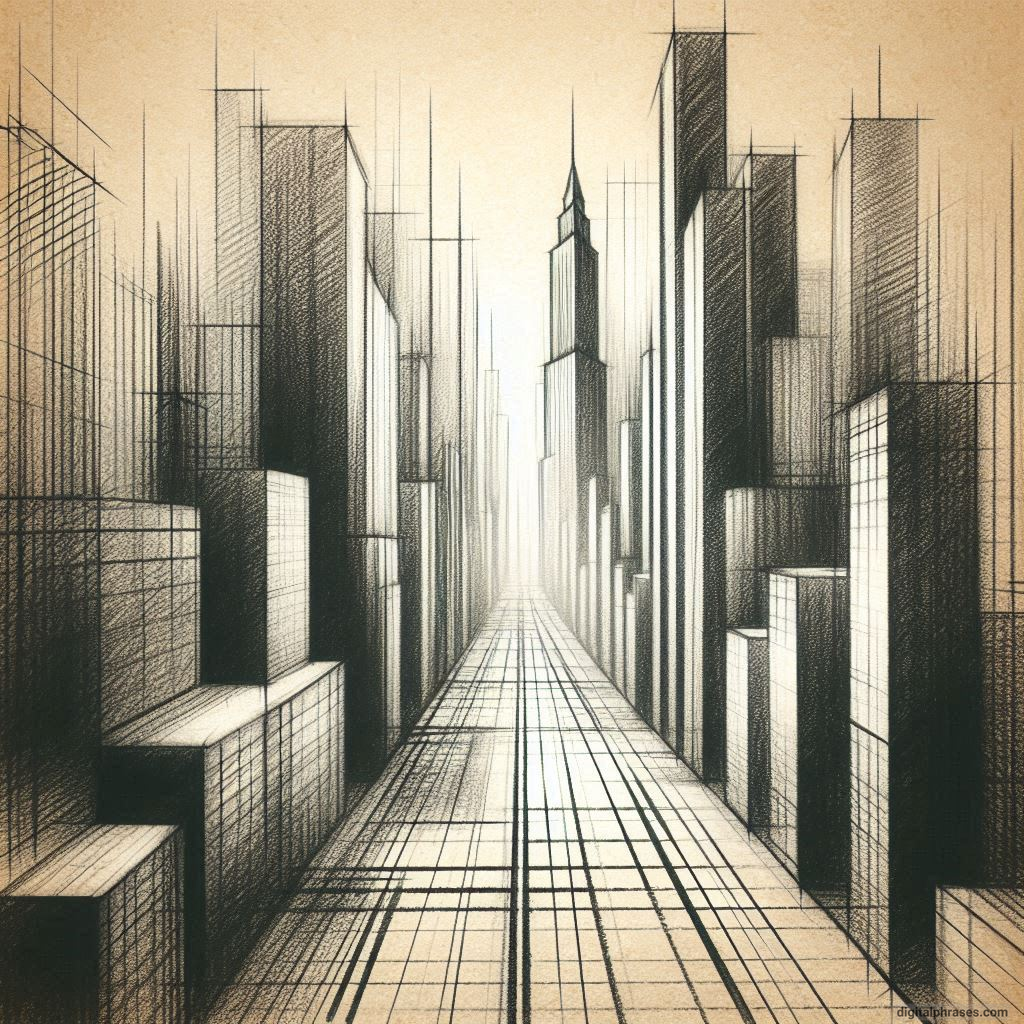
49
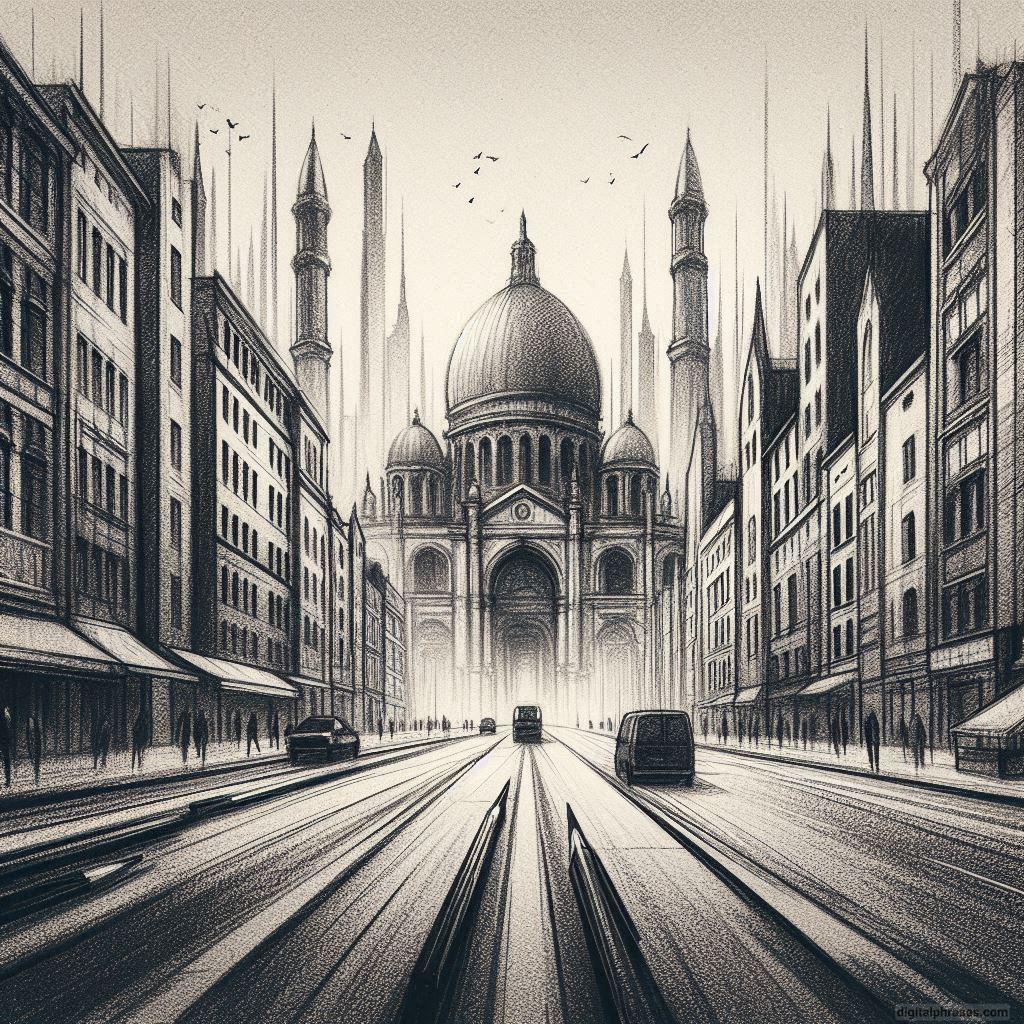
50
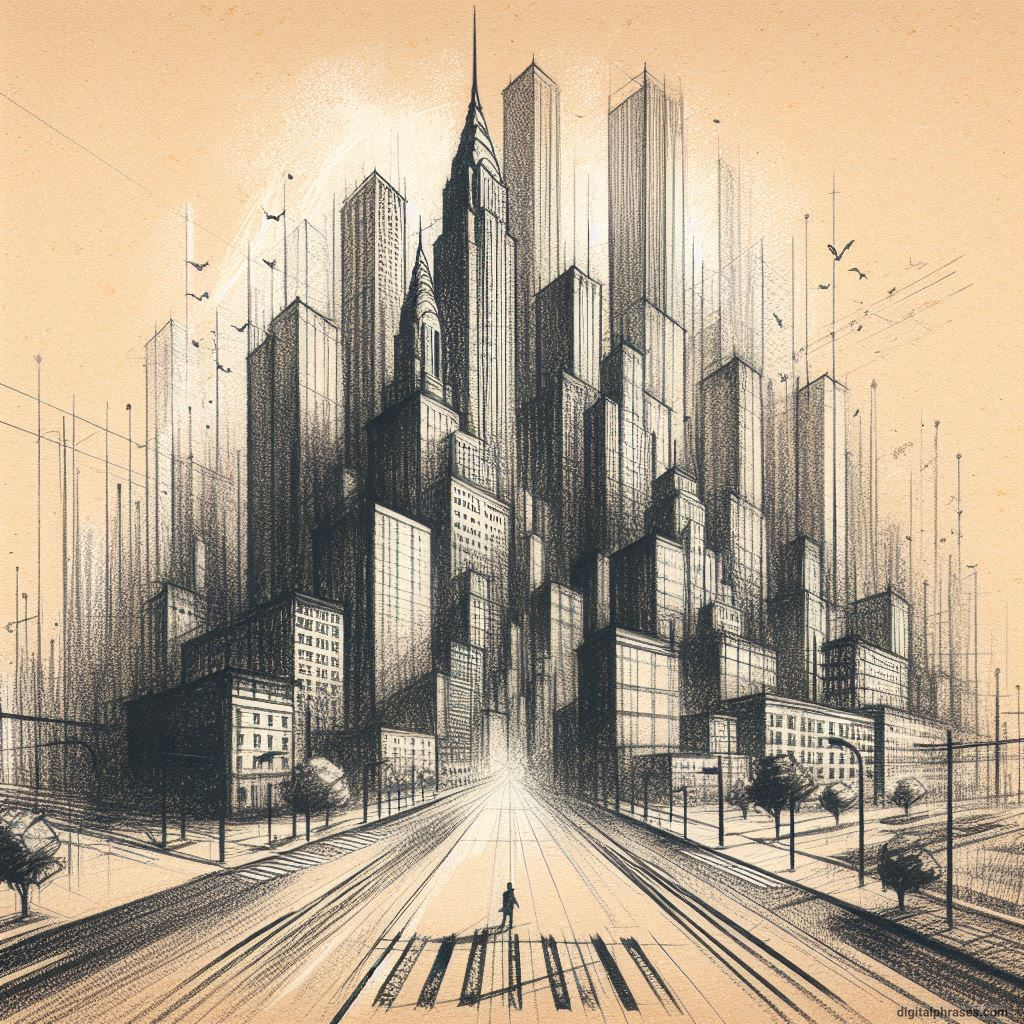
51

52
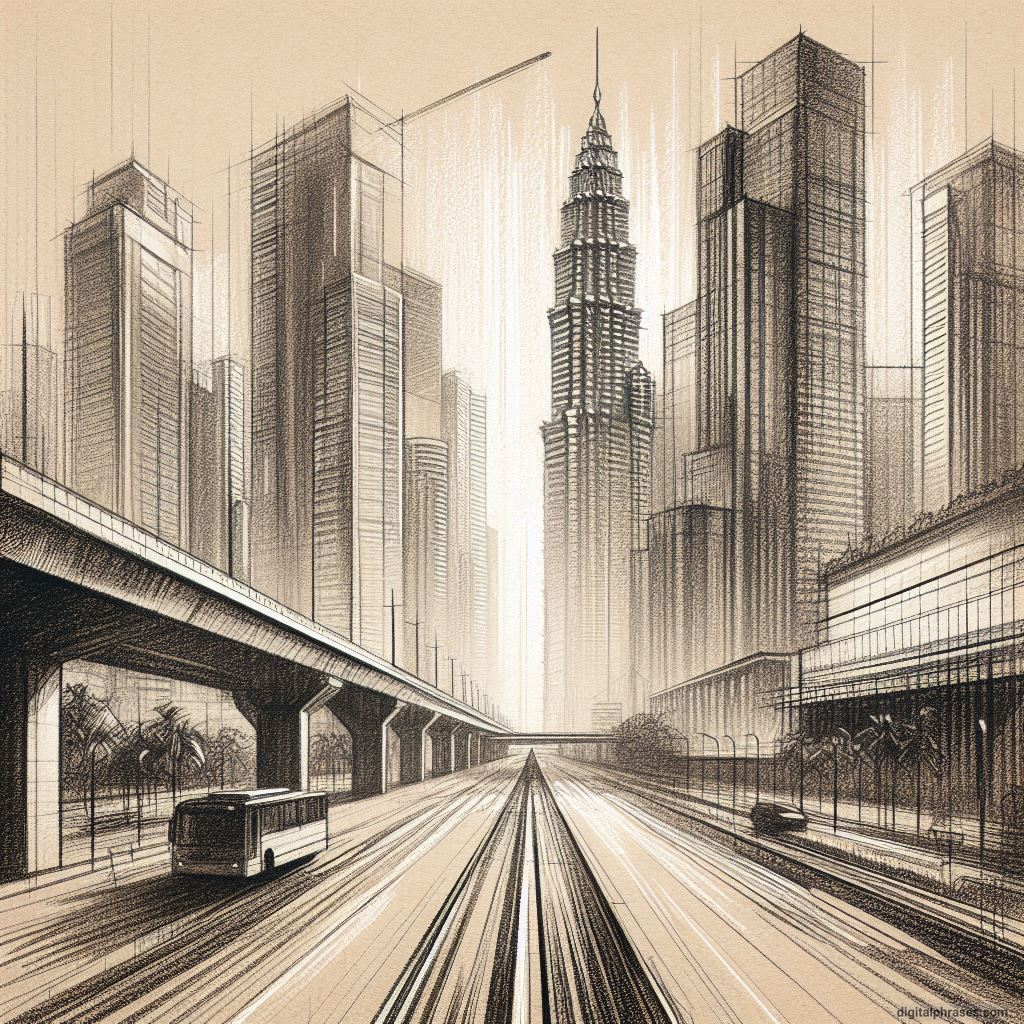
53
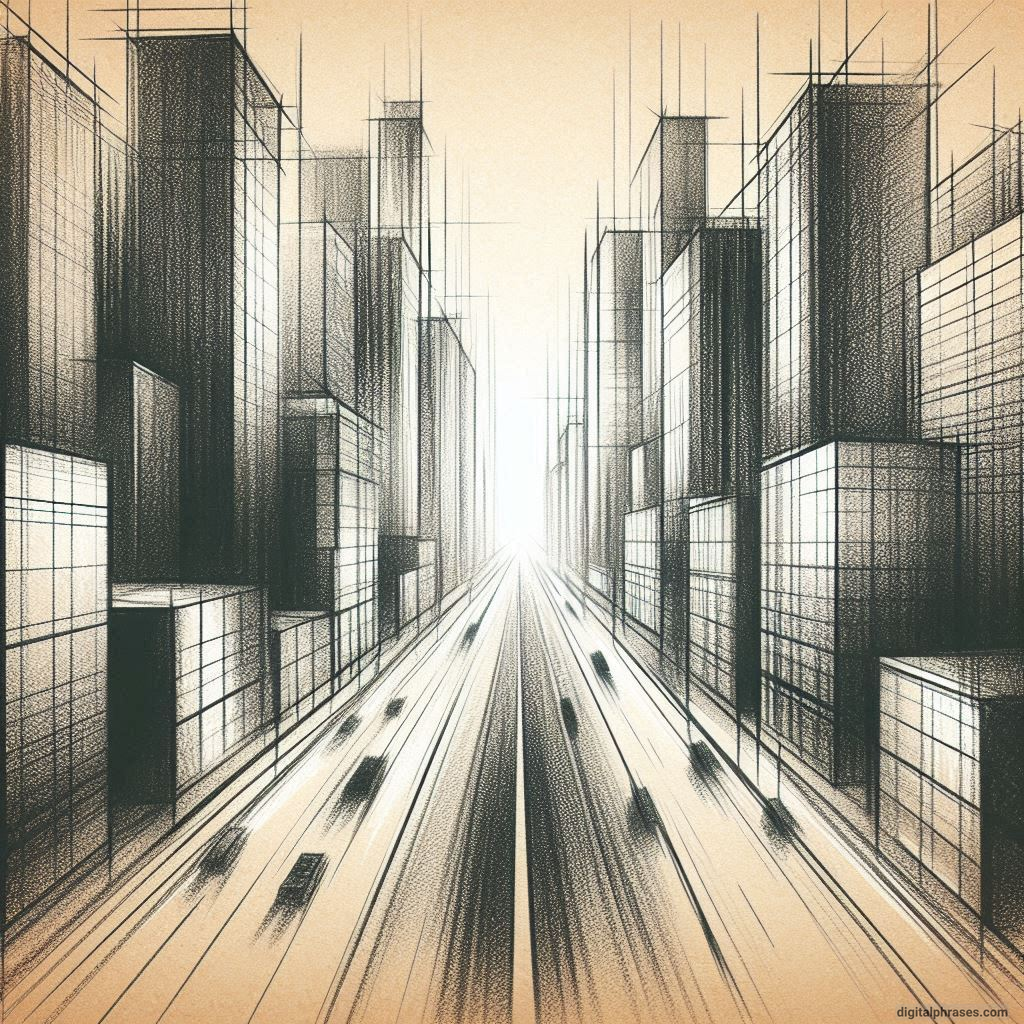
54
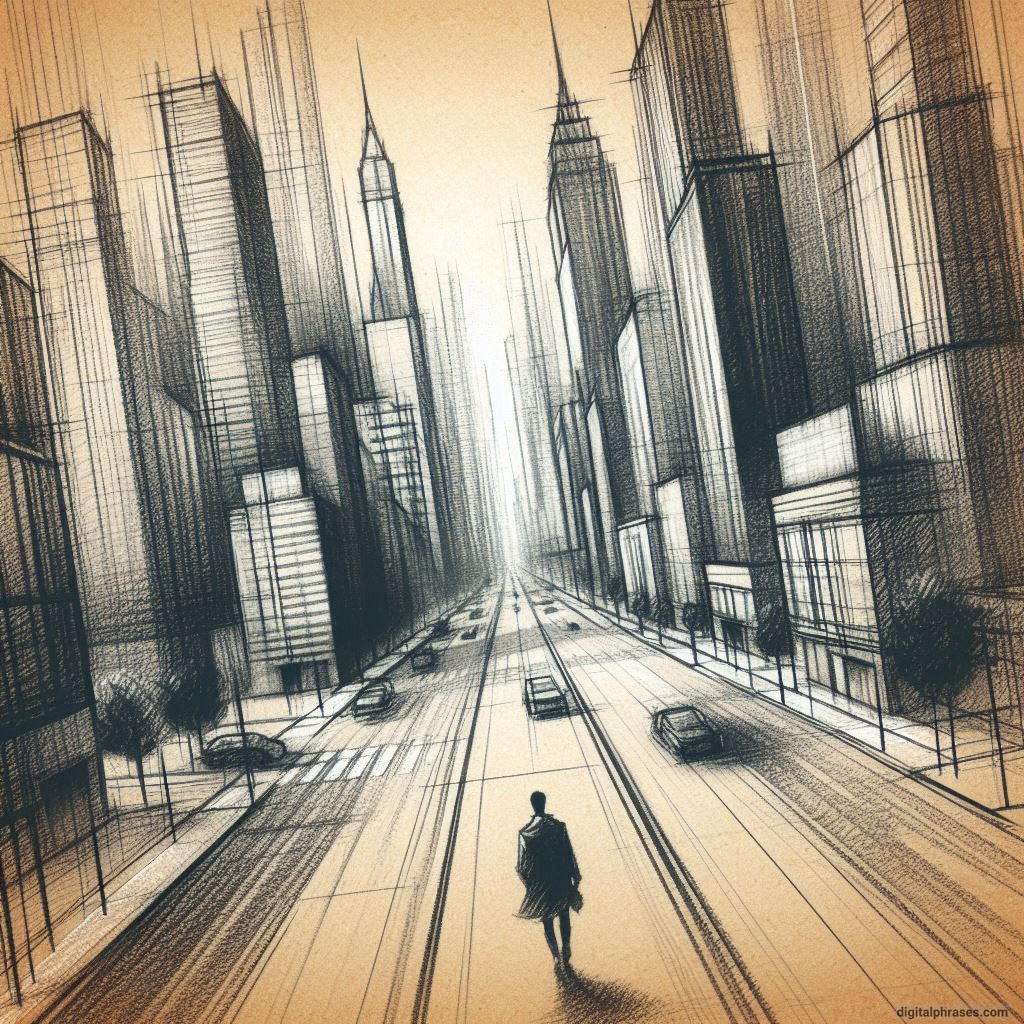
55
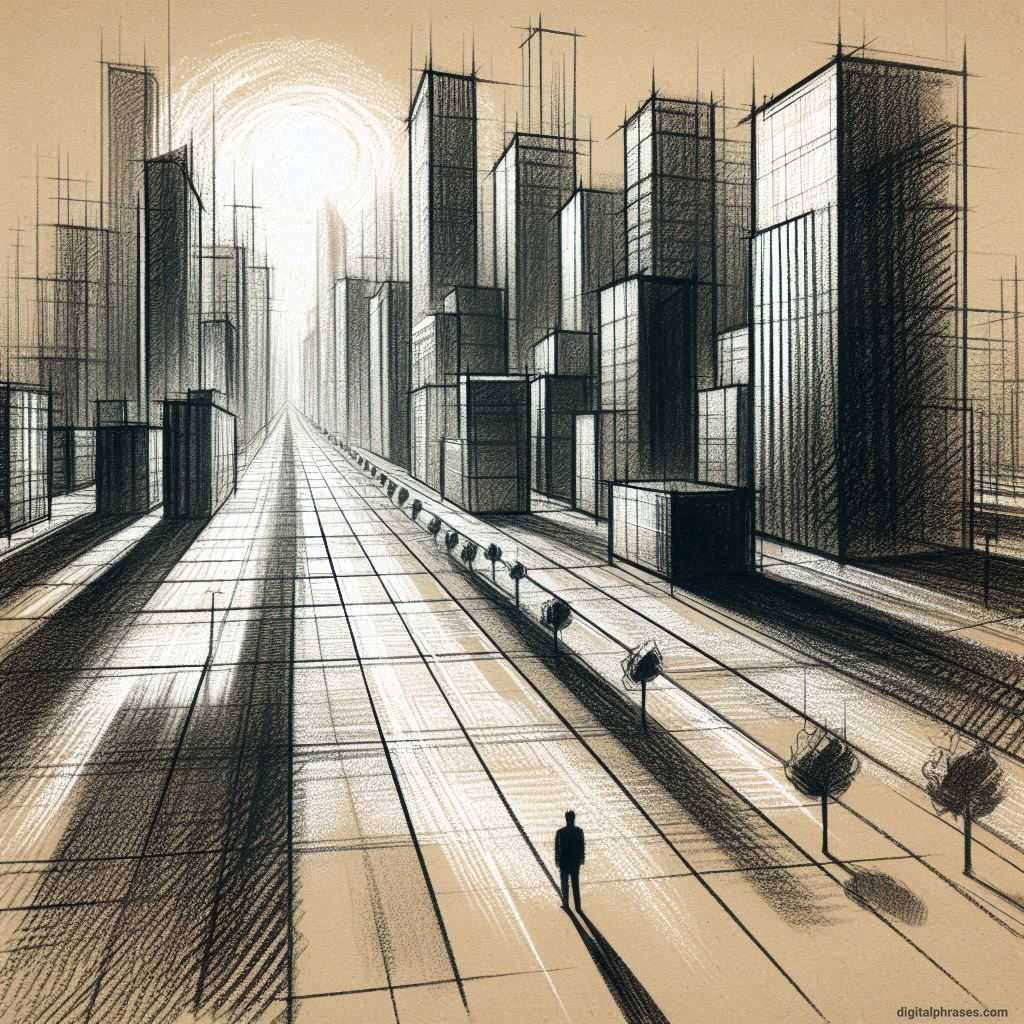
56
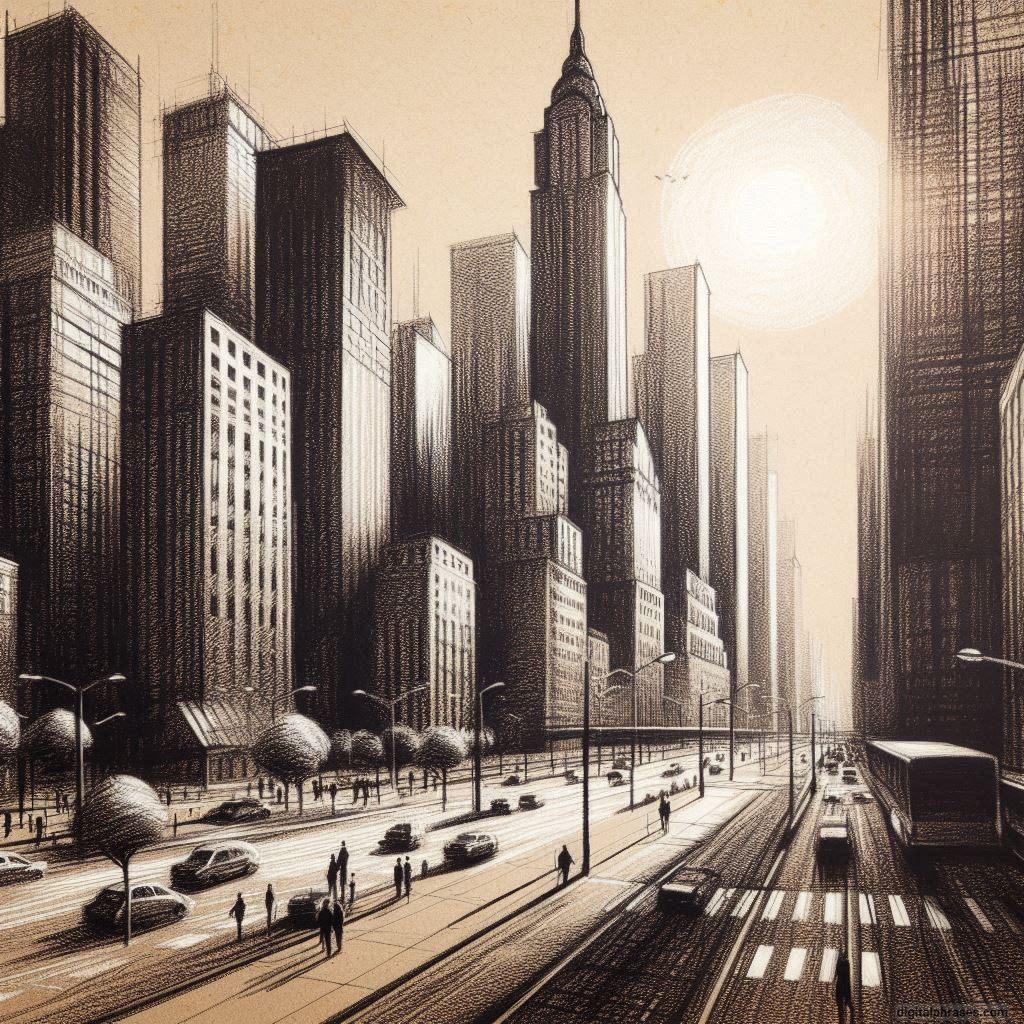
57

58

59

60

61
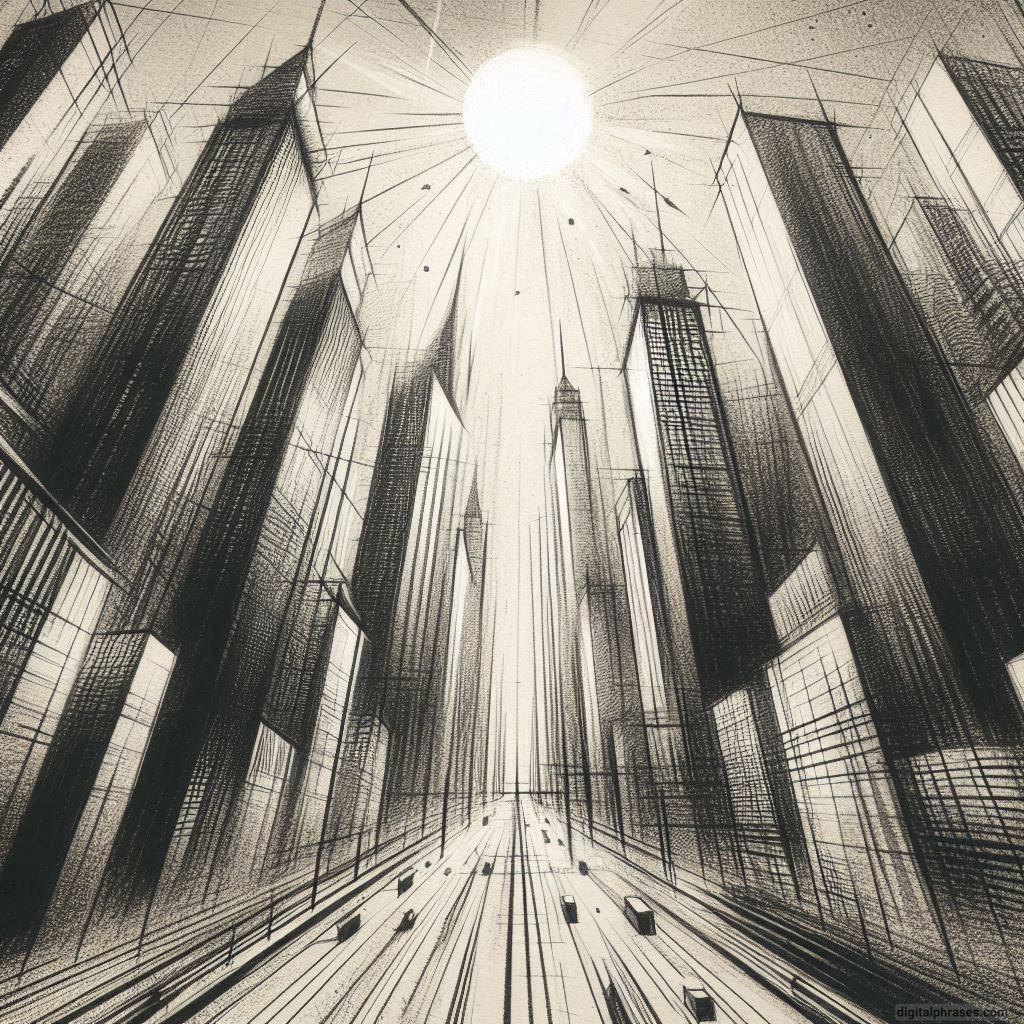
62
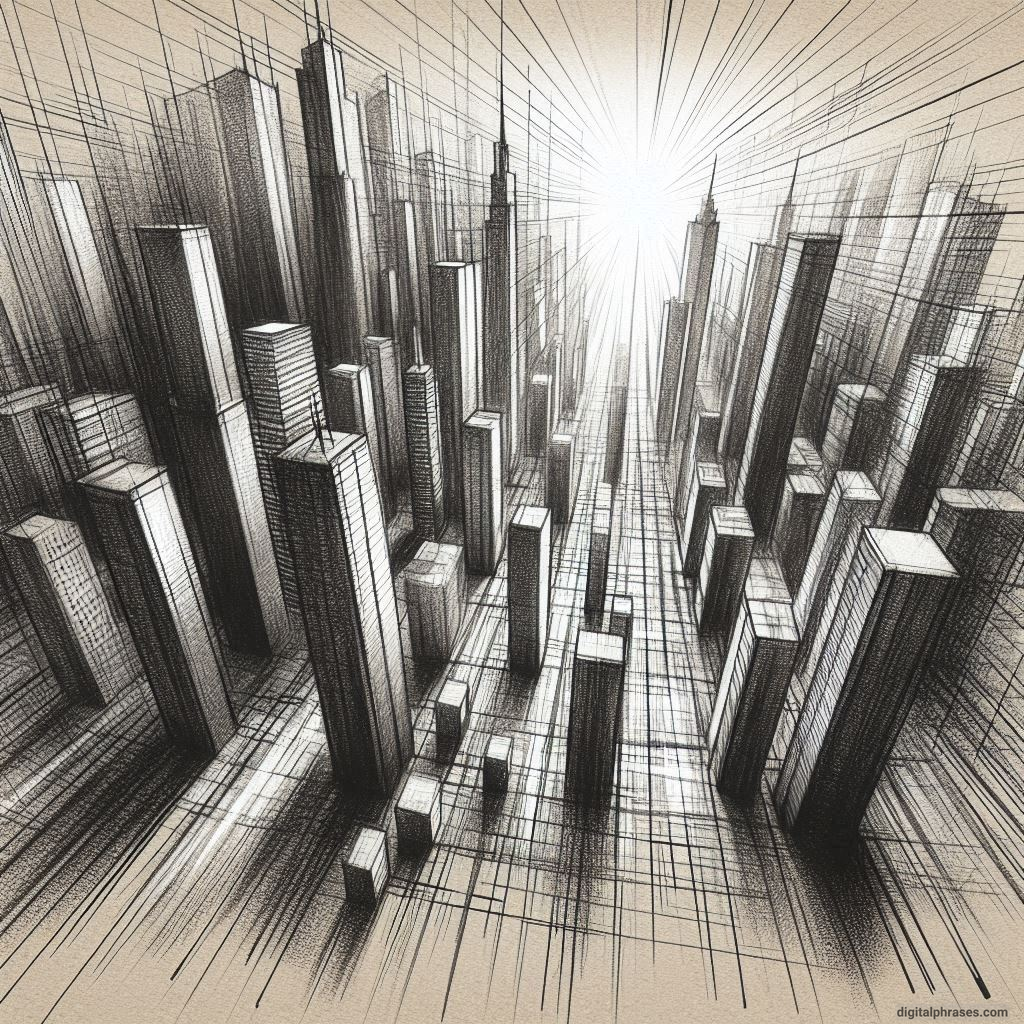
63
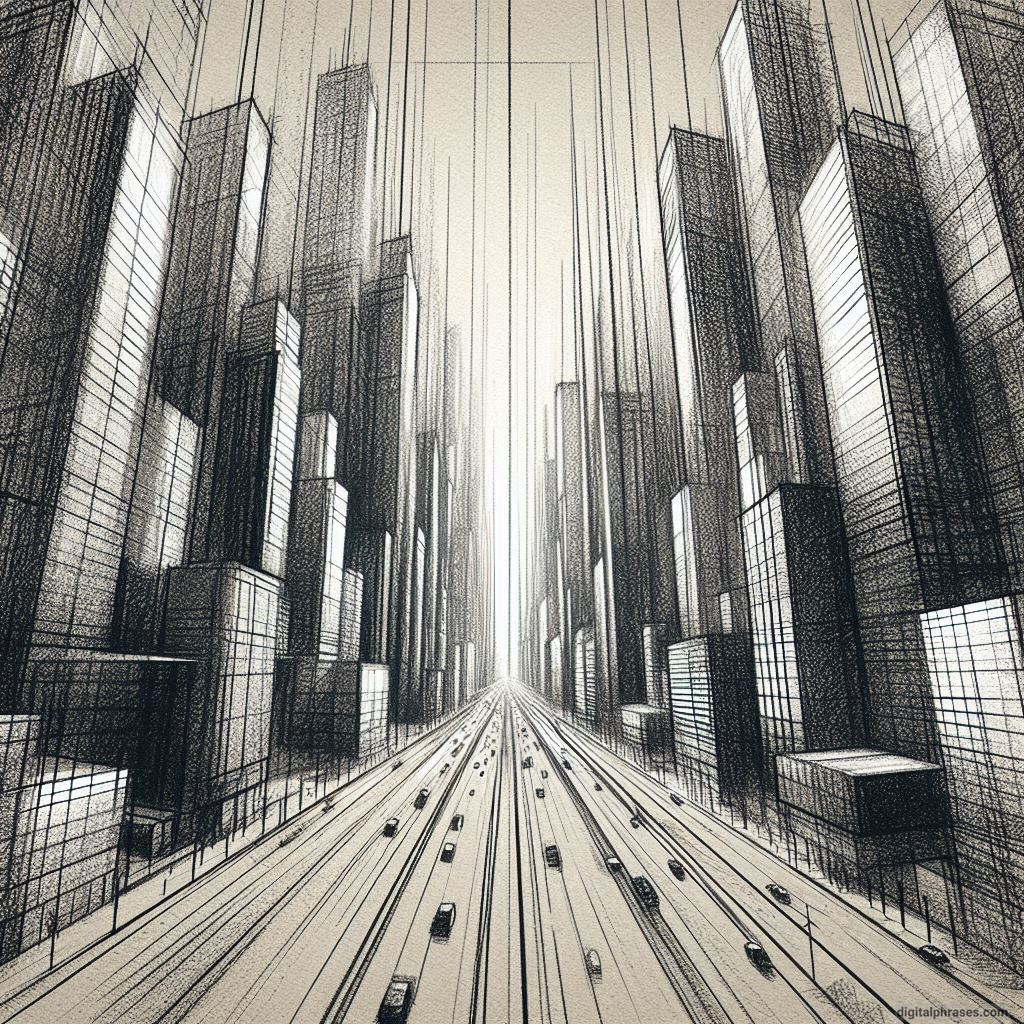
64
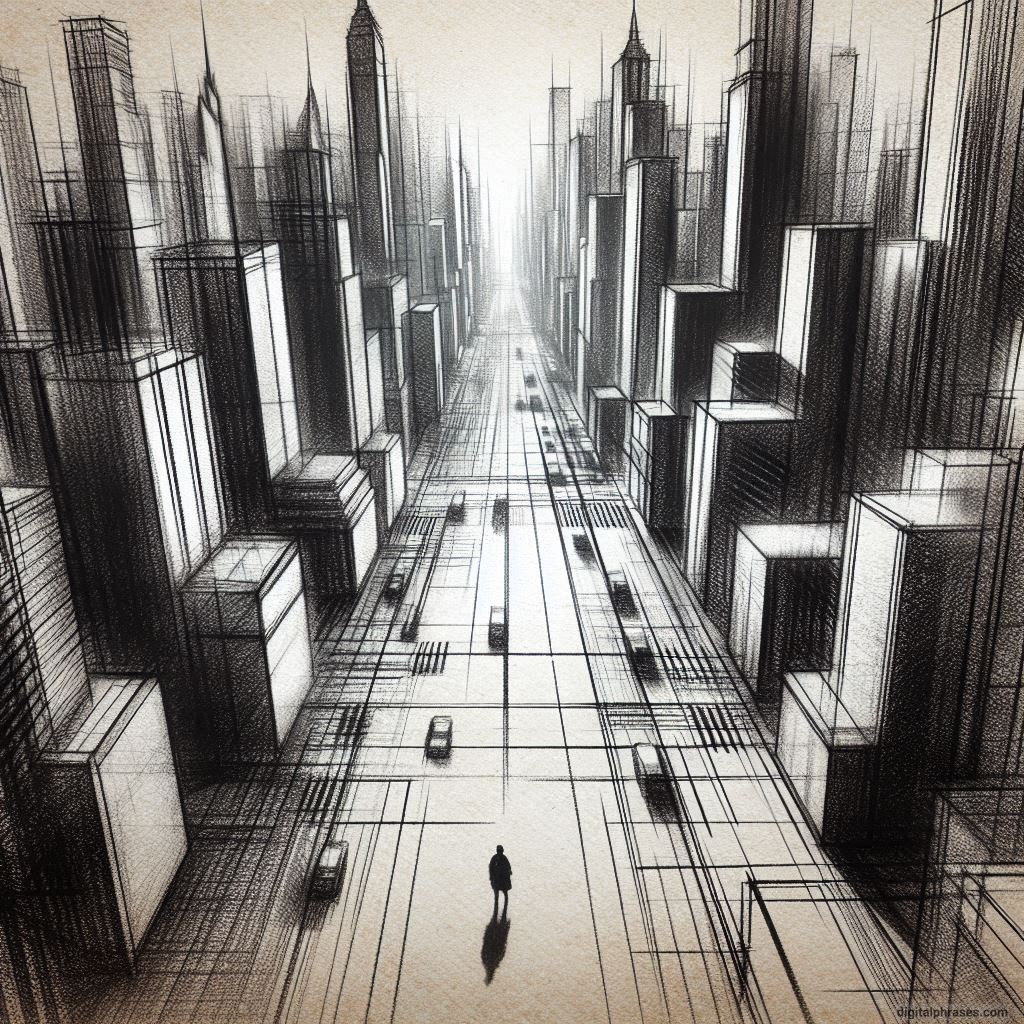
65

66

67

68

69
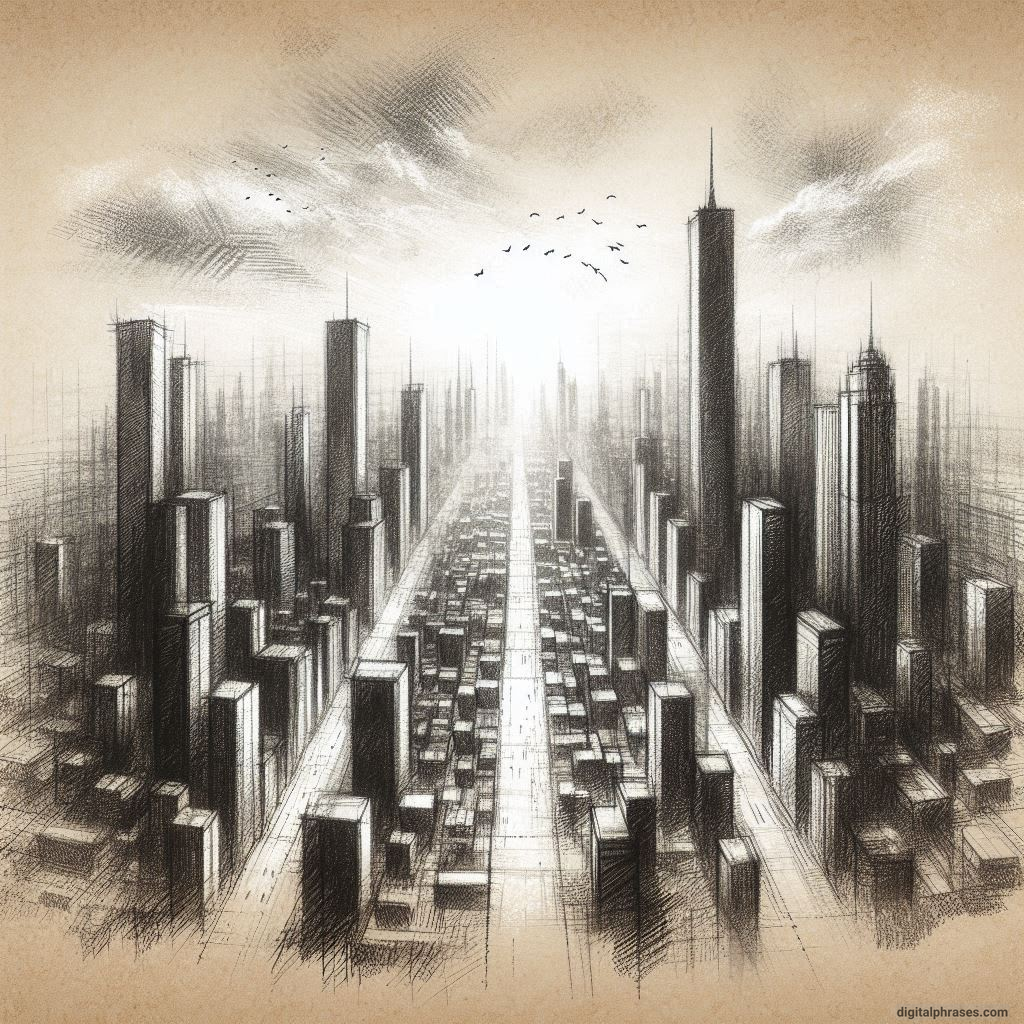
70

71
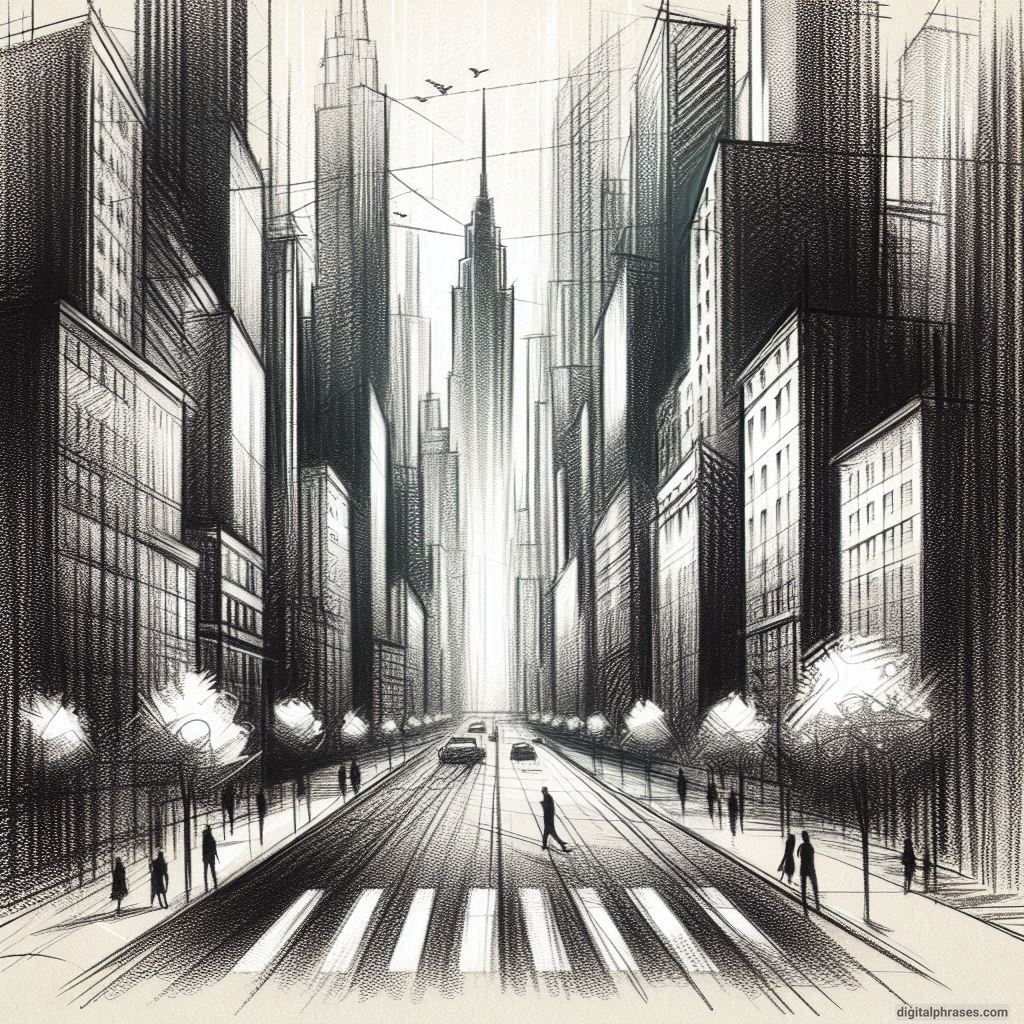
72

73
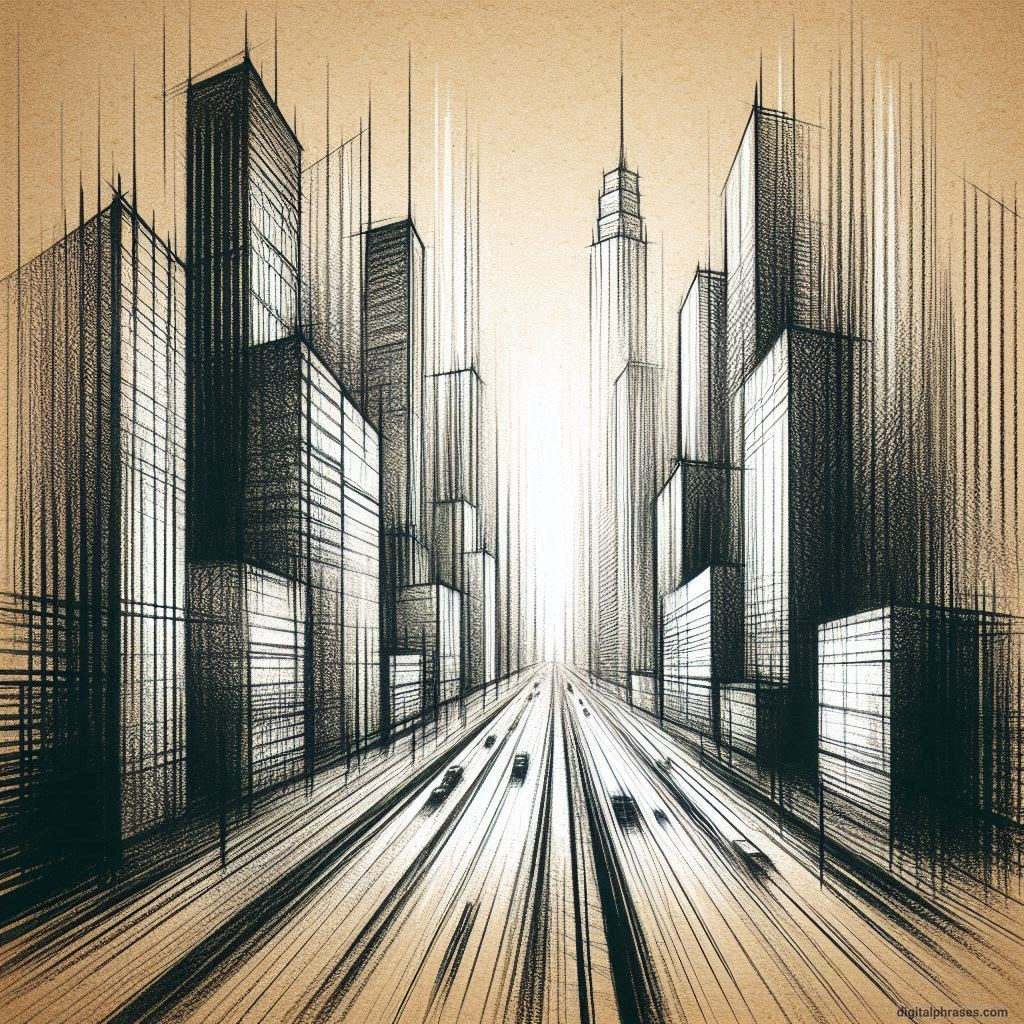
74
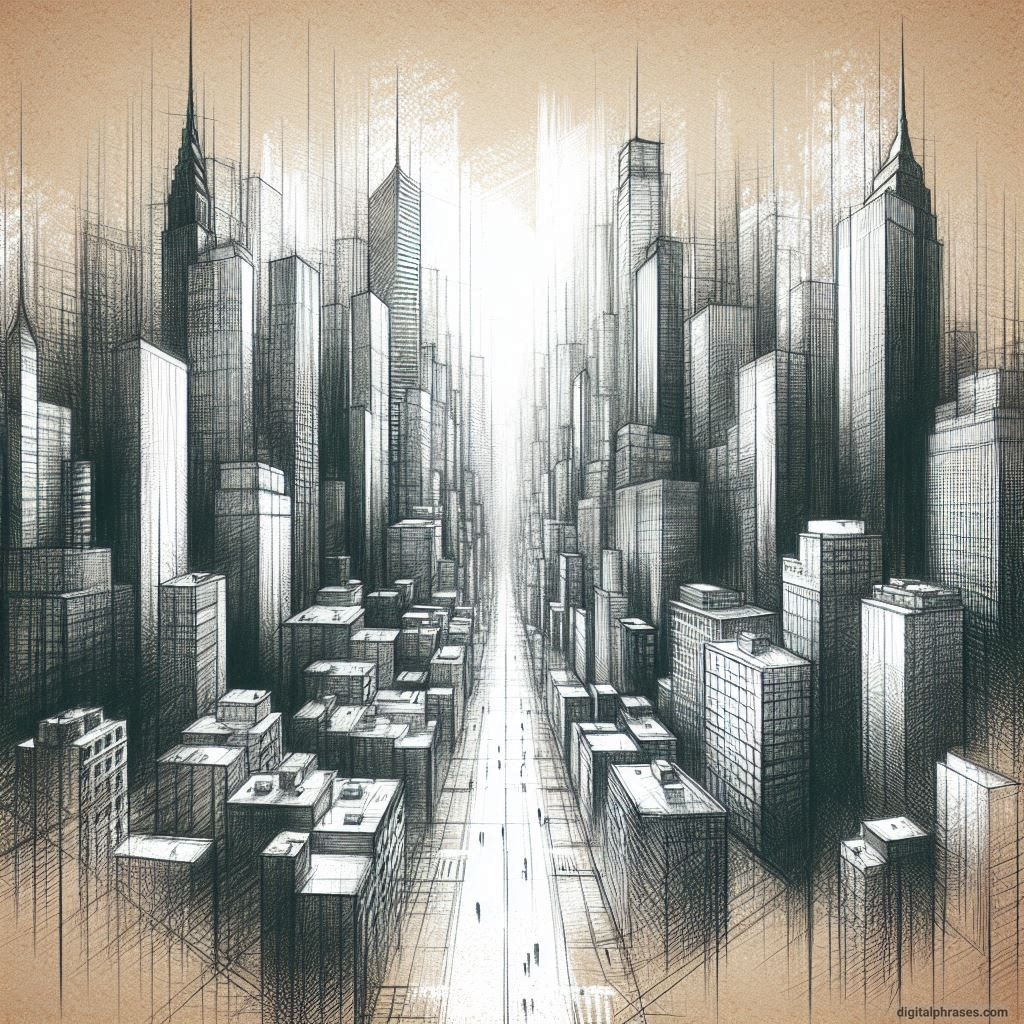
75

76

77
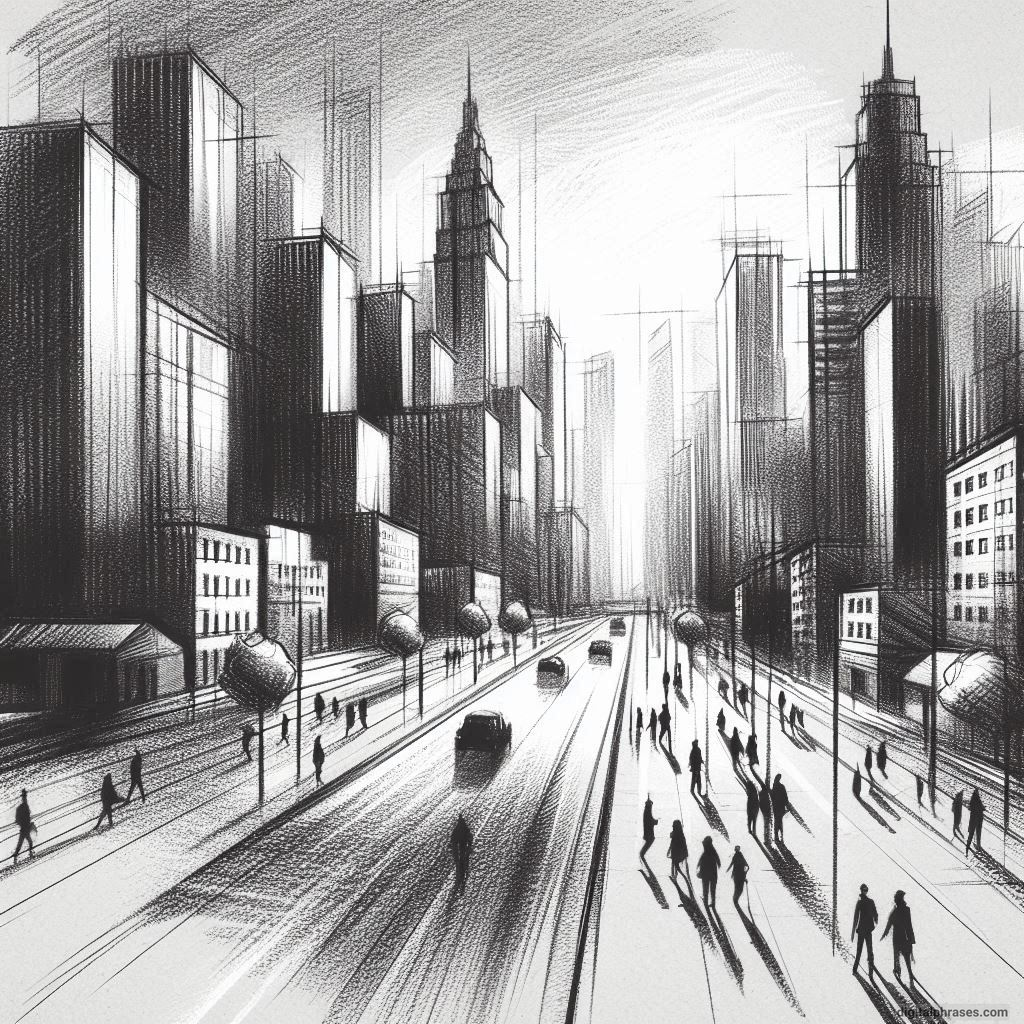
78
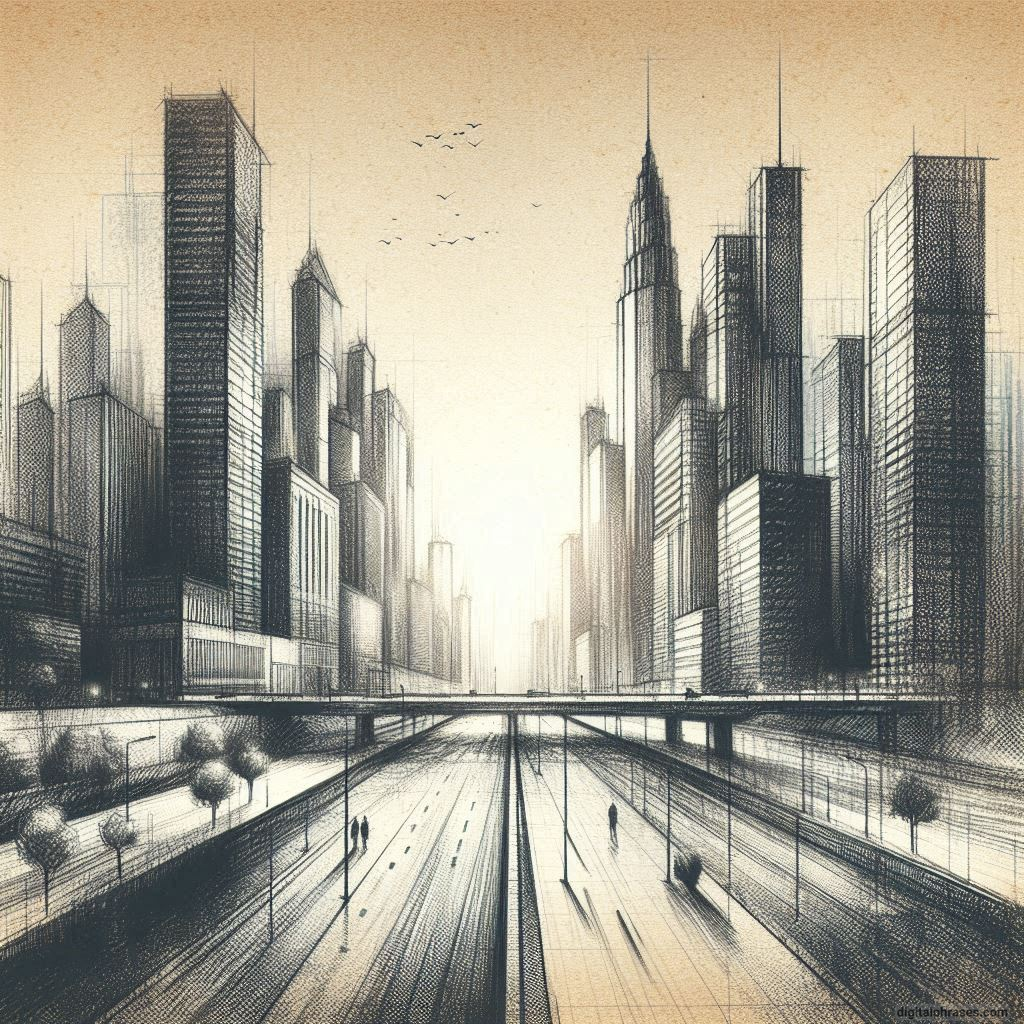
79
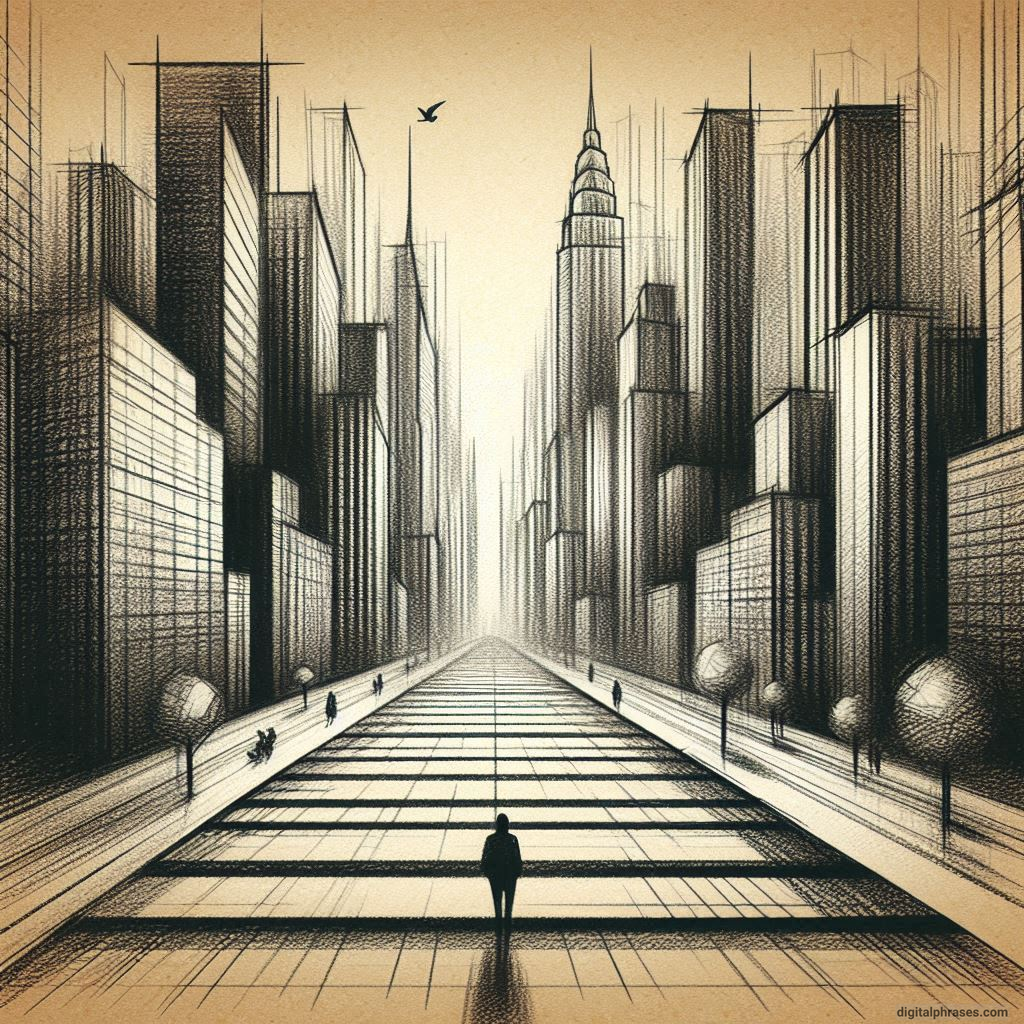
80
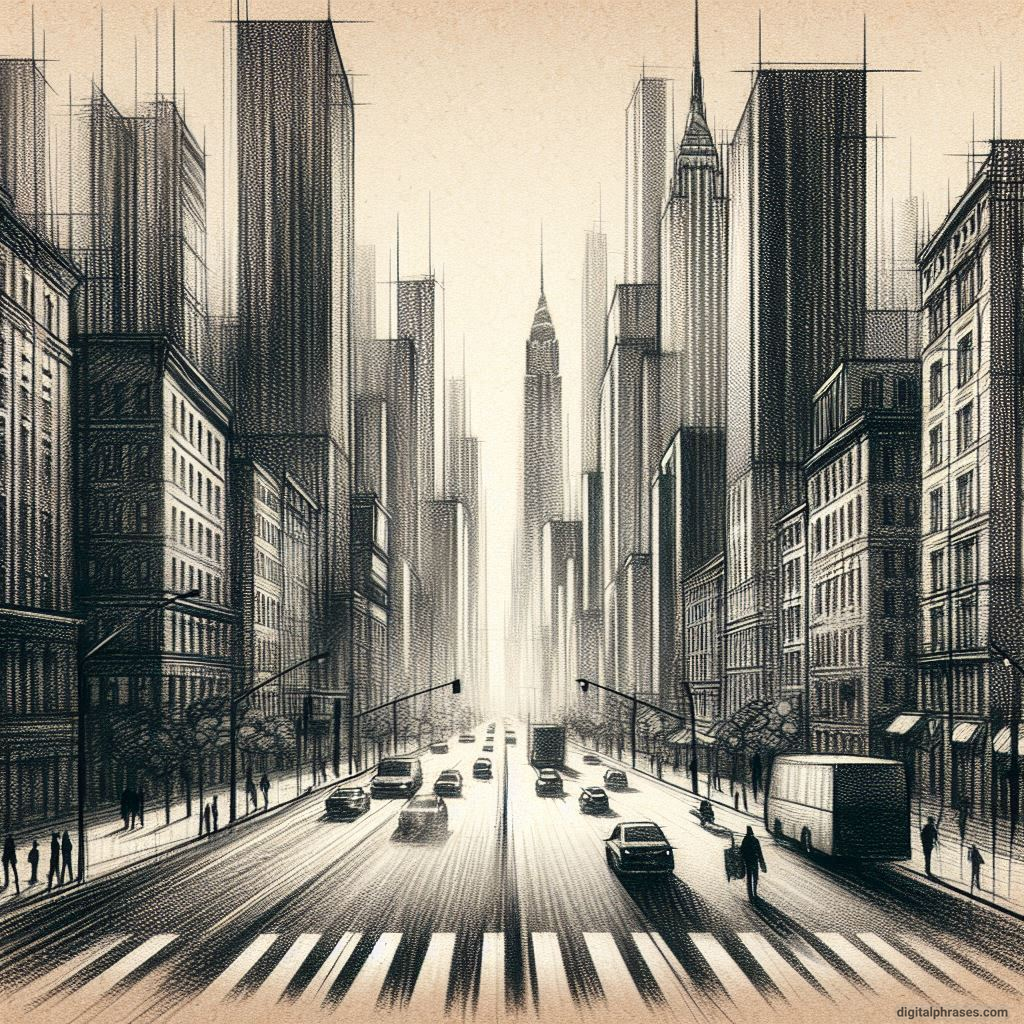
What is One Point Perspective Drawing?
One-point perspective drawing is a technique used in art and design to create the illusion of depth and three-dimensionality on a two-dimensional surface.
It is one of the simplest forms of perspective drawing, where all the elements in the composition converge towards a single vanishing point on the horizon line.
Here’s a breakdown of the key elements of one-point perspective:
Key Elements of One-Point Perspective
- Horizon Line:
- This is a horizontal line that represents the viewer’s eye level. It is where the sky appears to meet the ground in the drawing.
- Vanishing Point:
- A single point on the horizon line where all parallel lines in the drawing converge. This point is crucial for establishing the sense of depth.
- Orthogonal Lines:
- These are diagonal lines that extend from the edges of objects in the drawing toward the vanishing point. They help to define the sides of objects and guide the perspective.
- Vertical and Horizontal Lines:
- Lines that are perpendicular and parallel to the horizon line, respectively, are used to draw objects and structures accurately.
How It Works
In one-point perspective, the front face of objects is parallel to the picture plane, while the sides recede towards the vanishing point. This technique is especially useful for drawing scenes such as roads, railway tracks, or any scenario where objects are aligned in a straight path away from the viewer.
Applications
- Architectural Drawings: To create the illusion of depth in building designs.
- Interior Design: To visualize how rooms and spaces will appear.
- Art: To provide depth and realism in paintings and sketches.
Example
Imagine standing in the middle of a long, straight road. The road appears to narrow and converge at a point in the distance. This point is the vanishing point in a one-point perspective drawing. The road lines, utility poles, and any parallel lines will all direct toward this vanishing point, creating a realistic depiction of space and depth.
One-point perspective is a foundational technique in art education, helping artists and designers to accurately represent three-dimensional spaces on two-dimensional surfaces.
Things to Keep in Mind While Drawing a One Point Perspective Sketch of a City
1. Understanding the Basics of One-Point Perspective
Before diving into the intricacies of cityscape drawing, it’s crucial to understand the foundational concepts of one-point perspective. This technique involves drawing objects so that they appear to recede towards a single vanishing point on the horizon line, creating a sense of depth and dimensionality.
Key Concepts:
- Horizon Line: This is your eye level in the drawing. For cityscapes, it typically aligns with the level of the viewer’s eye in real life, which can be adjusted depending on whether you want to depict a bird’s eye view, a street-level view, or a view from a lower angle.
- Vanishing Point: This point is crucial for guiding the perspective of your drawing. All lines parallel to the viewer’s line of sight recede toward this point. For a cityscape, you’ll typically place it near the center of your paper to emphasize the convergence of streets and buildings into the distance.
- Orthogonal Lines: These are the diagonal lines that lead towards the vanishing point. They are used to structure the forms of buildings, roads, and other urban features in your sketch.
Understanding these elements allows you to create a framework for your drawing, ensuring that all components align correctly and maintain a consistent perspective.
2. Planning Your Composition
The composition is a critical aspect of any art form, and it’s no different when drawing cityscapes. Effective composition involves careful planning of what elements to include and how to position them to convey the desired narrative or feeling.
Tips for Planning:
- Select a Focal Point: While the vanishing point guides perspective, the focal point is where you want the viewer’s attention to be drawn. This could be a specific building, a busy street corner, or an architectural landmark.
- Balance and Proportion: Distribute buildings and other elements evenly to avoid making the scene look lopsided. Consider the scale of the buildings relative to one another to ensure that larger structures don’t overwhelm smaller ones unless intended for dramatic effect.
- Foreground, Middle Ground, and Background: Layering your cityscape into these three areas creates depth. The foreground can include elements like trees or street furniture, the middle ground usually contains the main subject buildings, and the background will feature distant structures or a skyline.
By planning your composition, you can effectively guide the viewer’s eye through the drawing, creating a dynamic and engaging cityscape.
3. Capturing Architectural Details
One of the most enjoyable aspects of drawing cityscapes is capturing the architectural details that give buildings their character. Paying attention to these details will bring authenticity and interest to your sketches.
Strategies for Detailing:
- Observation and Reference: Study photographs or real-life views of the cityscape you are drawing. Observe the intricate details such as windows, doors, rooflines, and decorative elements.
- Simplification: While details are important, it’s equally important not to overwhelm your sketch with too much information. Focus on the most distinctive features of each building. Simplify complex patterns and textures to keep the drawing readable.
- Texture and Material: Different buildings have different textures depending on their materials, like the smoothness of glass versus the roughness of brick. Use varying pencil techniques or ink patterns to suggest these textures.
- Consistency with Perspective: Ensure that all details conform to the one-point perspective rules, aligning with the vanishing point. Windows, doors, and roof lines should all recede appropriately to maintain realism.
By focusing on architectural details, your cityscape sketches will not only look more realistic but also tell a more compelling story about the place you’re depicting.
4. Utilizing Light and Shadow
Light and shadow play a crucial role in creating depth and dimension in any drawing. In cityscapes, they help define forms and convey the time of day or the mood of the scene.
Techniques for Light and Shadow:
- Identify the Light Source: Determine where the light is coming from in your scene. In urban sketches, this is usually the sun or streetlights. This will guide how shadows are cast and where highlights should be placed.
- Shadow Angles and Lengths: Shadows should be drawn in alignment with the light source and perspective. Use the vanishing point to determine the correct angles and lengths of shadows cast by buildings and other objects.
- Contrast and Depth: Use varying degrees of shading to create contrast between lit and shadowed areas. Strong contrasts can make elements pop, while softer transitions can add subtlety.
- Reflections: Consider how light reflects off surfaces, such as windows or water puddles. Reflections can add an additional layer of realism to your sketch.
By skillfully applying light and shadow, you can transform a flat drawing into a vibrant scene full of depth and emotion.
5. Adding Life to Your Cityscape
A cityscape is not just about buildings and roads; it’s also about the life and activity within the city. Adding human elements can bring warmth and movement to your sketches.
Adding Life:
- Figures and People: Include pedestrians, cyclists, or vehicles to suggest movement and scale. These figures can provide context about the size of buildings and the activity level in the scene.
- Nature Elements: Trees, plants, and parks can soften the urban environment, adding contrast and a touch of nature to the cityscape.
- Street Elements: Incorporate elements like streetlights, signs, benches, and storefronts to add authenticity and interest to your drawing. These details suggest the vibrancy of city life.
- Dynamic Elements: Consider capturing moments of activity, such as bustling crowds, moving traffic, or even birds flying overhead. These elements suggest the passage of time and the ever-changing nature of urban environments.
Incorporating life into your sketches not only makes them more relatable and engaging but also helps convey the atmosphere and energy of the cityscape.
Creating a one-point perspective cityscape sketch can be an immensely rewarding experience.
By keeping these essential tips in mind—understanding perspective basics, planning composition, capturing architectural details, utilizing light and shadow, and adding life—you can enhance your drawing skills and create captivating urban scenes.
Irrespective of whether you’re sketching from life or using photographs as reference, these guidelines will help you create cityscapes that are both realistic and compelling.
Remember, practice is key to mastering this art form, so keep experimenting and refining your technique as you explore the vast possibilities of cityscape drawing.
Happy sketching!






